

Zitierweise / cite as:
Payer, Alois <1944 - >: Chronik Thailands = กาลานุกรมสยามประเทศไทย. -- Chronik 2010 / B. E. 2553. -- 2. Januar bis Juni. -- Fassung vom 2017-03-22. -- URL: http://www.payer.de/thailandchronik/chronik2010b.htm
Erstmals publiziert: 2013-04-16
Überarbeitungen: 2017-03-22 [Ergänzungen] ; 2017-01-02 [Ergänzungen] ; 2016-12-16 [Ergänzungen] ; 2015-01-20 [Ergänzungen] ; 2014-10-24 [Ergänzungen] ; 2014-08-24 [Ergänzungen] ; 2014-02-26 [Ergänzungen] ; 2014-02-19 [Ergänzungen] ; 2014-02-10 [Ergänzungen] ; 2013-04-25 [Teilung des Jahrgangs] ; 2013-04-21 [Ergänzungen]
©opyright: Dieser Text steht der Allgemeinheit zur Verfügung. Eine Verwertung in Publikationen, die über übliche Zitate hinausgeht, bedarf der ausdrücklichen Genehmigung des Herausgebers.
Dieser Text ist Teil der Abteilung
Thailand von
Tüpfli's Global Village Library
ช้างตายทั้งตัวเอาใบบัวปิดไม่มิด
|
Gewidmet meiner lieben Frau Margarete Payer die seit unserem ersten Besuch in Thailand 1974 mit mir die Liebe zu den und die Sorge um die Bewohner Thailands teilt. |
|
Bei thailändischen Statistiken muss man mit allen Fehlerquellen rechnen, die in folgendem Werk beschrieben sind:
Die Statistikdiagramme geben also meistens eher qualitative als korrekte quantitative Beziehungen wieder.
|
2010-01

Das Januarheft von Voice of Taksin [i.e. Thaksin Shinawatra - ทักษิณ ชินวัตร, 1949 - ] hat als farbiges Titelbild eine Darstellung des Mönchs Khruba Sriwichai (ครูบาศรีวิชั, 1878 - 1938) mit der Überschrift: ล้านนาท้าอธรรม! จากครูบาศรีวิชัถึงทักษิณ "Lanna fordert das Unrecht heraus seit Khruba Sriwichai bis Thaksin"
Abb.: Titelbild
2010-01-01
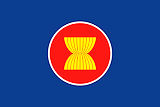

Inkrafttreten der Freihandelszone (ASEAN China Free Trade Agreement / เขตการค้าเสรีจีน-อาเซียน / 中国―东盟自由贸易区) zwischen ASEAN (Association of Southeast Asian Nations) und der Volksrepublik China. Gemessen am Handelsvolumen (2009: US-$200 Mrd.), ist es die drittgrößte Freihandelszone der Welt. Mit knapp 1,9 Milliarden Einwohnern übertrifft diese Freihandelszone sowohl den Europäischen Wirtschaftsraum (500 Mio. EW) als auch die Nordamerikanische Freihandelszone (NAFTA - North American Free Trade Agreement) (450 Mio. EW). 2010 fallen ca. 90% aller Zölle der VR China und Indonesien, Brunei, Malaysia, Philippinen und Thailand weg. 2015 folgen Kambodscha, Laos und Vietnam. Unternehmen aus dem Dienstleistungssektor wird der gegenseitige Zugang erleichtert. Die restlichen Zölle, z.B. für Textilien und Elektrowaren, sollen langsam abgebaut werden.
Abb.: ASEAN–China Free Trade Area (ACFTA)
[Bildquelle: Ichwan Palongengi / Wikipedia. -- Public domain]
2010-01-01



Inkrafttreten des Freihandelsabkommens (ASEAN-Australia-New Zealand Free Trade Area - AANZFTA) zwischen der ASEAN (Association of Southeast Asian Nations) und Australien und Neuseeland. Über 90% der Zölle werden ganz oder schrittweise abgeschafft, u. a. die auf Leder und Textilien. Das Abkommen war 2009-02-27 unterzeichnet worden.
Abb.: ASEAN-Australia-New Zealand Free Trade Area - AANZFTA
[Bildquelle: CIA. -- Public domain]
2010-01-07

Einschätzung der strategischen Wichtigkeit Thailands für die USA durch US-Botschafter Eric G. John:
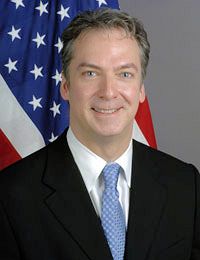
| 9. (C) Despite the political divide, Thailand's strategic
importance to the U.S. should not be understated. The
U.S.-Thai military relationship, which began during World War
II when the U.S. trained Thais to covertly conduct special
operations against the Japanese forces occupying Thailand has
evolved into a partnership that provides the U.S. with unique
benefits. Thailand remains crucial to U.S. interests in the
Asia-Pacific region and beyond. Our military engagement
affords us unique training venues, the opportunity to conduct
exercises that are nearly impossible to match elsewhere, a
willing participant in international peacekeeping operations,
essential access to facilities amid vital sea and air lanes
that support contingency and humanitarian missions, and a
partner that is a key ASEAN nation in which we continue to
promote democratic ideals.
10. (C) Thailand's willingness to allow the United States to use Utapao (อู่ตะเภา) Naval Air Station as the hub for our regional assistance program was key to making the 2004 tsunami and the 2008 Cyclone Nargis relief operations a success. While those high-profile relief operations highlighted publicly the value of access to Utapao, the air base is used regularly for military flights. A prime example was the critical support." "18. (C) As the shape of Southeast Asia, Asia writ large, and the world has changed, so have Thai attitudes. The Chinese have been making a major push to upgrade all aspects of relations, including mil-mil. Thailand is not interested in making a choice between the U.S. and China (nor do we see closer Chinese-Thai relations as automatically threatening to our interests here), but we will need to work harder to maintain the preferred status we have enjoyed. While Thai military links with the United States are deeper and far more apparent than Sino-Thai links, China's growing influence in Thailand is readily evident. 19. (C) The Chinese have made a strong effort to court the Thai military. The Thai military has a range of Chinese weapons systems in its arsenal; the PLA Navy is interested in closer links with the Thai navy, and China has worked with Thailand to improve air defense equipment provided to Thailand in the late 1980's. In 2007 and 2008, Thai and Chinese Special Forces conducted joint exercises, and other mil-to-mil exchanges have expanded in recent years, as has the number of bilateral military VIP visits. 20. (C) During a visit to Thailand by Chinese Minister of National Defense Liang Guanglie [梁光烈, 1940 - ] for the King's birthday celebrations in early December 2009, the Thai and Chinese militaries agreed to expand bilateral exercises to include the two nations' navies, marines, and air forces. The initial exercise will be conducted early this year, with the PLA engaging Thai sailors and marines through an amphibious landing event and a naval rescue and humanitarian relief exercise. While some entities within the RTG resisted the expanded engagement, reportedly the MFA and the Marine Commandant, the Thai tell us that the Chinese pushed hard for a rapid expansion of bilateral exercises. The Thai Marines suggested to us that the exercise will be held at the platoon or company level; it is unclear how many Navy personnel may participate. ¶21. (C) The expansion of joint exercises follows China providing Thailand with $49 million in military assistance following the 2006 coup. Beyond exercises and assistance, the number of exchanges by Thai and Chinese officers studying at military institutes has increased significantly in recent years, particularly since the coup. The PLA has also actively courted Thai military leaders, including Defense Minister Prawit Wongsuwan [พลเอก ประวิตร วงษ์สุวรรณ, 1945 - ] and Army Commander General Anupong Paochinda [อนุพงษ์ เผ่าจินดา, 1949 - ], through multiple hosted-visits to China. JOHN" [Quelle: http://wikileaks.org/cable/2010/01/10BANGKOK45.html#par9. -- Zugriff am 2013-02-13] |
2010-01-10
Rothemden (เสื้อแดง) protestieren vor dem illegal erbauten Haus von Surayud Chulanont (สุรยุทธ จุลานนท์, 1943 - ), Mitglied des Privy Council und Ex-Ministerpräsident. Das Haus steht mit herrlicher Aussicht in der Khao Yai Thieng Forest Reserve (เขาใหญ่เที่ยง). Surayud sieht sich schließlich gezwungen, das Grundstück dem Staat zu übergeben.
Abb.: Lage von Khao Yai Thieng Forest Reserve (เขาใหญ่เที่ยง)
[Bildquelle: OpenStreetMap. -- Creative Commons Lizenz (Namensnennung, share alike)]Dr. Weng Tojirakarn (เหวง โตจิราการ, 1951 - ) sagt in einem Interview mit Nick Nostitz:
“This is the most important forest reserve for water supply around Khorat [โคราช]. But Surayud has built his house here against the law, and nobody does anything. This shows the double standards – normal people go to jail for the same thing. The legal structure in Thailand has been destroyed. We protest here to demand the land taken back to the state, and that Surayud will be punished the same way normal people are.” [Quelle: http://asiapacific.anu.edu.au/newmandala/2010/01/13/red-shirts-at-surayud%E2%80%99s-holiday-paradise/. -- Zugriff am 2015-01-20. -- Fair use]
Die Bangkok Post berichtet über den Erwerb des Grundstücks:
"The former owner of the Khao Yai Thiang property [ เขาใหญ่เที่ยง] now held by a former prime minister flouted a "not-to-be-sold" condition when he parted with the land in 1993.
Phra Bao Akkhajitto, whose layman's name is Bao Sinnok, was given the land by state. He was allowed to farm it, not sell it. However, he agreed to sell anyway, when a local construction manager and two military officers turned up at his property and expressed an interest.
He sold the 22-rai plot for 600,000 baht cash because he needed the money.
"I knew the land was for us to live on and farm. It was not meant to be sold. But my family and I needed money," he said.
Phra Bao, who was ordained in 2000, said he sold the plot to a man called Noppadol, who ran a construction company in Nakhon Ratchasima [นครราชสีมา] municipality.
Other potential buyers offered him 400,000-500,000 baht for the land. "But Mr Noppadol came to me with 600,000 baht, so I sold it to him," he said.
The Sinnok family was among hundreds of families who occupied the Khao Yai Thiang forest reserves in early 1970s and grew corn and cassava.
They were later allocated a 15-rai plot each under a 1975 cabinet resolution.
Under the resolution, the allocated land can be transferred to the farmers' legal heirs, but cannot be sold.
Noppadol, whose surname was Pitakwanit, transferred the plot to Maj-Gen Surarit Jantrathip, then a Channel 5 director, in 1997.
The property changed hands again in 2002, when Khunying Chitravadee Chulanont [จิตรวดี จุลานนท์, 1949 - ], wife of privy councillor and former prime minister Gen Surayud [สุรยุทธ จุลานนท์, 1943 - ], became the registered owner.
The plot is now registered under the name of Chul Chulanont [จุล จุลานนท์], Gen Surayud's son.
The Sinnok family moved from Khao Yai Thiang to Ban Sida in Bua Yai [บัวใหญ่] district after selling the property. Phra Bao said he did not care to know to whom he was selling the land.
"Mr Noppadol showed up on my property with two military officers. He didn't say who he was buying the land for, and I didn't see the need to ask." He heard about the land plot in 2007 when Gen Surayud, then the prime minister, was embroiled in a forest reserve encroachment scandal concerning the site."[Quelle: http://mycommunitynetworking.blogspot.de/2010/01/bangkok-post-10012010-former-owner-of.html. -- Zugriff am 2015-01-20. -- Fair use]
2010-01-25

Bericht von US-Botschafter Eric G. John an das State Departement in Washington DC:
| ""SUBJECT: THAILAND: AMBASSADOR ENGAGES PRIVY COUNCIL CHAIR
PREM, OTHER "ESTABLISHMENT" FIGURES ON YEAR AHEAD
1. (S) Summary: Ambassador paid a series of New Year's-related calls on influential Thai figures, including Privy Council [คณะองคมนตรีไทย]Chair GEN Prem [เปรม ติณสูลานนท์, 1920 - ], Privy Council member ACM Siddhi [สิทธิ เศวตศิลา, 1919 - ], and former PM Anand [อานันท์ ปันยารชุน, 1932 - ], to discuss the year ahead. Abhisit's [อภิสิทธิ์ เวชชาชีวะ , 1964 - ] performance, issues related to the royal family, and challenges posed by Thaksin/Hun Sen emerged as the primary themes. Prem offered a more positive assessment of Abhisit's performance than Siddhi, who criticized Abhisit for a lack of resolve and the absence of an effective team to carry out his policies. All three focused on the challenge posed by Thaksin [ทักษิณ ชินวัตร, 1949 - ] to the government and, indirectly, to the monarchy; Anand attributed part of the King's poor health to Thaksin, and both Prem and Siddhi were upset about Thaksin's alliance of convenience with Cambodian leader Hun Sen [ហ៊ុន សែន, 1952 - ]. All three had quite negative comments about Crown Prince Vajiralongkorn [สมเด็จพระบรมโอรสาธิราช เจ้าฟ้ามหาวชิราลงกรณฯ สยามมกุฎราชกุมาร, 1952 - ]. While asserting that the Crown Prince will become King, both Siddhi and Anand implied the country would be better off if other arrangements could be made. Siddhi expressed preference for Princess Sirindhorn [มหาจักรีสิรินธร, 1955 - ]; Anand suggested only the King would be in a position to change succession, and acknowledged a low likelihood of that happening. [...] 8. (S) Prem acknowledged Crown Prince Vajiralongkorn probably maintained some sort of relationship with fugitive former PM Thaksin, "seeing him from time to time." Prem, clearly no fan of either man, cautioned that Thaksin ran the risk of self-delusion if he thought that the Crown Prince would act as his friend/supporter in the future merely because of Thaksin's monetary support; "he does not enjoy that sort of relationship." When Ambassador asked where the Crown Prince was currently, in Thailand or Europe, Prem replied dismissively: "You know his social life, how he is." (Note: a presumed reference to Vajiralongkorn's preference to spend time based out of Munich [München] with his main mistress, rather than in Thailand with his wife and son). 9. (S) ACM Siddhi, in a similar vein, noted that the Crown Prince frequently slipped away from Thailand, and that information about his air hostess mistresses was widely available on websites; he lamented how his former aide [Sorayuth Prompoj - สุรยุตม์ พรหมพจน์], now Thai Ambassador to Germany, was forced to leave Berlin for Munich [München] often to receive Vajiralongkorn. Siddhi raised Thaksin's controversial November Times On-line interview, which Siddhi claimed cast the King in a bad light and attempted to praise the Crown Prince as broad-minded and educated abroad, hinting that Vajiralongkorn would be ready to welcome Thaksin back to Thailand once he became King. [...] 11. (S) Ambassador similarly raised the Crown Prince's more confident demeanor with former PM Anand in late December, seeking Anand's assessment of the dynamics in play as succession inevitably drew nearer. Anand's response was similar to Siddhi's, but more detailed and blunt. Anand said that he had always believed that the Crown Prince would succeed his father, according to law. However, there could be complicating factors -- if Vajiralongkohn proved unable to stay out of politics, or avoid embarrassing financial transactions. After a pause, Anand added that the consensus view among many Thai was that the Crown Prince could not stop either, nor would he be able, at age 57, to rectify his behavior. After another pause, Anand added that someone really should raise the matter with the King, before adding with regret that there really was no one who could raise such a delicate topic (note: implied was the need for an alternative to Vajiralongkorn). 12. (S) ACM Siddhi expressed his personal concern about the declining image of the royal family in Thailand, noting that something as simple as excessive motorcade-related traffic jams caused by minor royals was an unnecessary but enduring irritant. Personal Private Secretary Arsa Sarasin [อาสา สารสิน, 1936 - ] had raised this with the King about eight years ago, according to Siddhi, and the King had agreed, authorizing Arsa to talk to royal family members and to set up new rules limiting entourages and occasions when traffic would be stopped. Nothing had changed; Siddhi noted that he had been caught up in traffic for 45 minutes the previous week returning for a meeting with the Chinese Ambassador, due to a royal motorcade. Stories that the Crown Prince now ordered second story windows closed as his motorcade passed achieved nothing but additional popular resentment, Siddhi added sorrowfully." [Quelle: http://wikileaks.org/cable/2010/01/10BANGKOK192.html. -- Zugriff am 2013-01-16] |
2010-02-03
ABAC-Umfrage zur Kenntnis von Kindern und Jugendlichen über Sexualität
Abb.: Kenntnis von Kindern und Jugendlichen über Geburtenkontrolle, 2010-02
[Datenquelle: ABAC Poll. -- http://en.thaihealth.or.th/thaihealth-news/new-space-youths-understanding-sex-talkaboutsexthaihealthorth. -- Zugriff am 2014-02-19]
Abb.: 9- bis 18jährige Thais suchen Rat in sexuellen Fragen von ..., 2010-02
[Datenquelle: ABAC Poll. -- http://en.thaihealth.or.th/thaihealth-news/new-space-youths-understanding-sex-talkaboutsexthaihealthorth. -- Zugriff am 2014-02-19]
2010-02-08
Beschluss des Mass Rapid Transit Master Plan in Bangkok Metropolitan Region (M-Map, โครงข่ายระบบรถไฟฟ้าขนส่งมวลชนในกรุงเทพมหานครและพื้นที่ต่อเนื่อง)
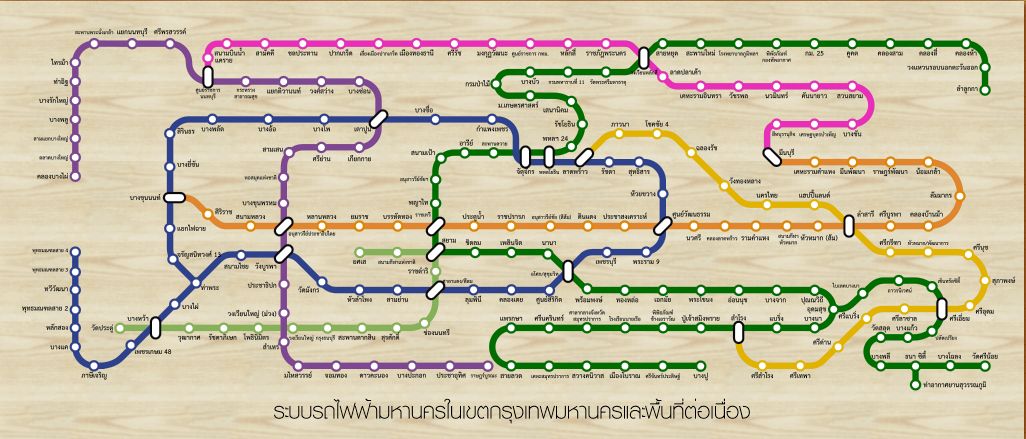
Abb.: M-Map
[Bildquelle: Virakri / th.Wikipedia. --
Creative Commons
Lizenz (Namensnennung, share alike)]
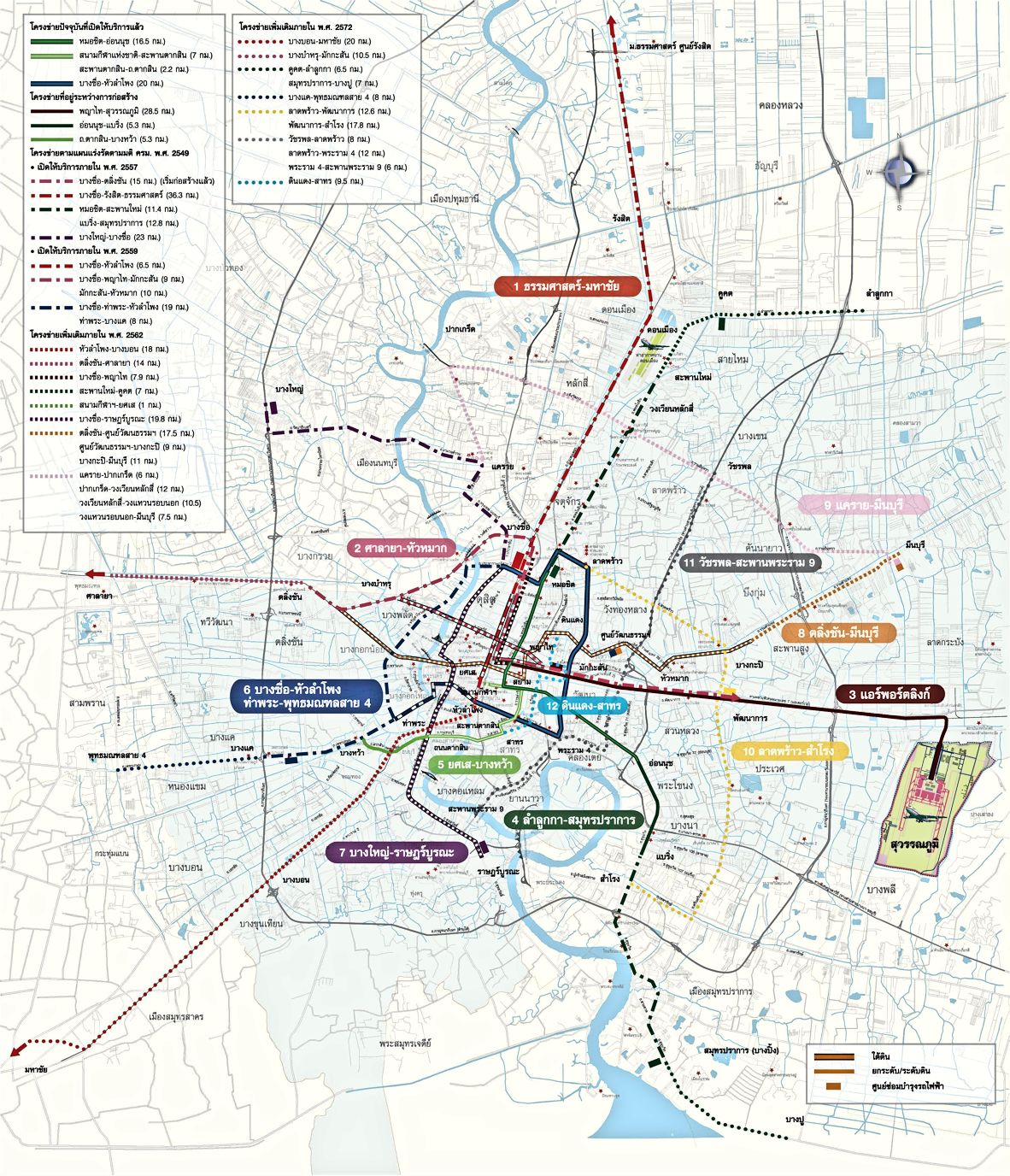
Abb.: M-Map
[Bildquelle: th.Wikipedia. -- Public domain]
"M-Map The current plan was endorsed by the Commission for the Management of Land Traffic, chaired by then-Prime Minister Abhisit Vejjajiva, on 8 February 2010.[2] It designates eight primary routes, consisting of two commuter rail lines, an airport rail link, and five rapid transit lines, as well as four feeder lines. The routes, totalling 508 kilometres (316 mi), are to be constructed within a development period of twenty years (2010–29). They are:[3]
- Primary lines
- Commuter rail
- Dark Red Line (Thammasat - Maha Chai -- มหาวิทยาลัยธรรมศาสตร์ ศูนย์รังสิต - มหาชัย)
- SRT Light Red Line (Sala Ya - Taling Chan - Hua Mak -- ศาลายา – ตลิ่งชัน – หัวหมาก)
- Airport Rail Link (Phaya Thai – Makkasan – Suvarnabhumi -- พญาไท - มักกะสัน - สุวรรณภูมิ) and ARL extension (Phaya Thai – Bang Sue – Don Mueang -- พญาไท - บางซื่อ -ดอนเมือง)
- Rapid transit
- Dark Green Line (Lam Luk Ka – Saphan Mai – Mo Chit – On Nut – Bearing – Samut Prakan – Bang Pu -- ลำลูกกา - บางปู), extension of the BTS Sukhumvit Line
- Light Green Line (Yot Se – Taksin Bridge – Bang Wa -- สะพานสมเด็จพระเจ้าตากสิน - บางหว้า), extension of the BTS Silom Line
- Blue Line (Bang Sue – Tha Phra, Hua Lamphong – Bang Khae – Phutthamonthon 4 -- บางซื่อ - พุทธมณฑล), extension of the MRT Blue Line
- Purple Line (Bang Yai – Rat Burana -- บางใหญ่ - ราษฎร์บูรณะ)
- Orange Line (Taling Chan – Min Buri -- ตลิ่งชัน - มีนบุรี)
- Feeder lines
- Pink Line (Khae Rai – Pak Kret – Min Buri -- แคราย - มีนบุรี)
- Yellow Line (Lat Phrao – Samrong -- ลาดพร้าว - สำโรง)
- Grey Line (Watcharaphon – Rama IX Bridge -- วัชรพงษ์ - สะพานพระราม 9)
- Light Blue Line (Din Daeng – Sathon -- ดินแดง - สาทร)
Development is divided into three stages, in addition to those lines already open or under construction:[4]
- In service as of 2009 (73.7 kilometres (45.8 mi))
- Under construction as of 2009 (43.26 kilometres (26.88 mi))
- Acceleration phase following the 2006 cabinet resolution (145 kilometres (90 mi))
- Extension phase to be completed by 2019 (141.2 kilometres (87.7 mi))
- Extension phase to be completed by 2029 (117.9 kilometres (73.3 mi))"
[Quelle: http://en.wikipedia.org/wiki/Mass_Rapid_Transit_Master_Plan_in_Bangkok_Metropolitan_Region. -- Zugriff am 2012-10-07]
2010-02-12
Tod des Luk Thung (ลูกทุ่ง) Band-Leader, Komponisten und Sängers Phayong Mukda (พยงค์ มุกดา = ตรีพยงค์ มุกดาพันธ์, geb. 1926).
Künstlerlink auf Spotify:
URI:
spotify:artist:7zaOSY35MnHEa6WnwETyZx
URL:
https://open.spotify.com/artist/7zaOSY35MnHEa6WnwETyZx
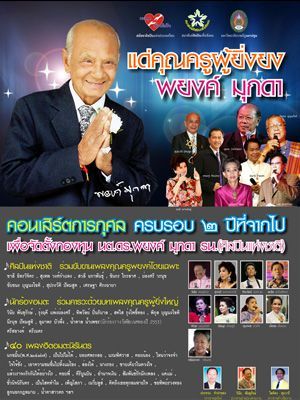
Abb.:
Plakat
[Fair use]
2010-02-24
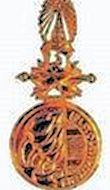
Zu National Artists (ศิลปินแห่งชาติ) werden ernannt:
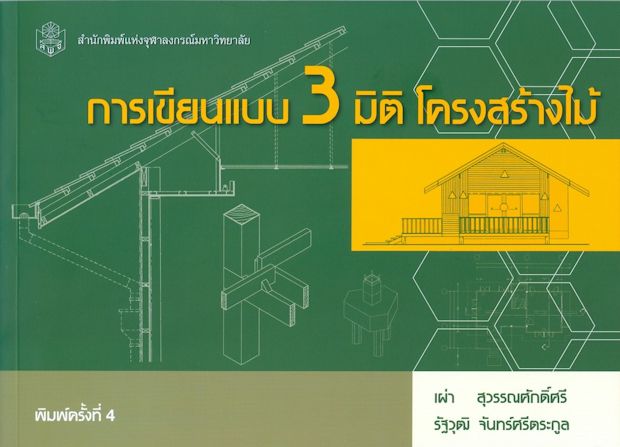
Abb.: Einbanditel eines Buchs von Phao Suwansaksri
(นายเผ่า สุวรรณศักดิ์ศรี)
[Fair use]
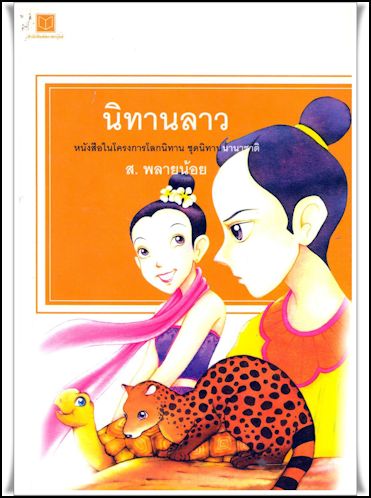
Abb.: Einbandtitel eines Buchs von Sombat Plainoi (นายสมบัติ พลายน้อย
= ส.พลายน้อย)
[Fair
use]
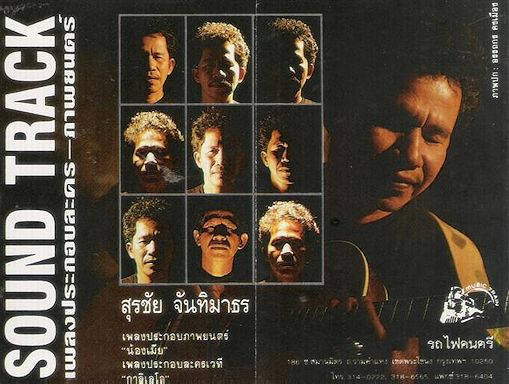
Abb.: CD-Titel von Surachai Chantimatorn (นายสุรชัย จันทิมาธร
= หงา คาราวาน)
[Fair
use]
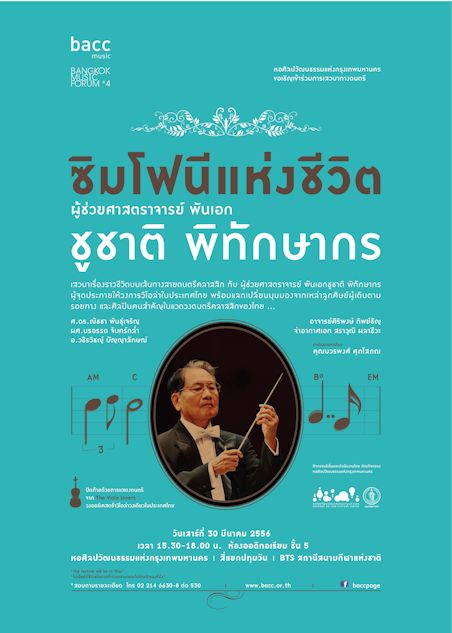
Abb.: Plakat zu einem Konzert unter der Leitung von Choochart Pitaksakorn (ผศ. พ.อ. (พิเศษ) ชูชาติ
พิทักษากร), 2013
[Fair use]
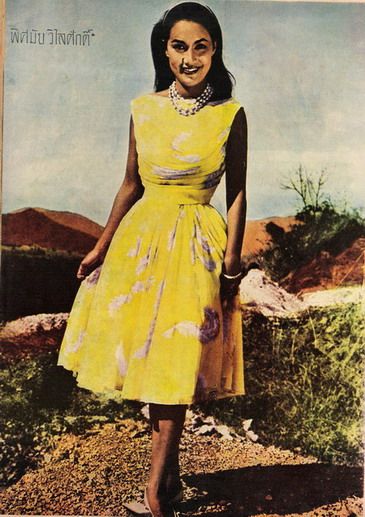
Abb.: Pissamai Vilaisak (นางสาวพิศมัย วิไลศักดิ์)
[Bildquelle: th.Wikipedia. -- Fair use]
2010-02-28
Premiere des Films Secret Sunday (9 วัด) von Saranyu Jiralaksanakul (ศรัญยู จิราลักษม์)
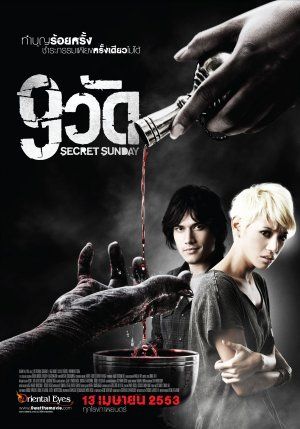
Abb.: Plakat
[Bildquelle: Wikipedia. -- Fair use]
|
"Secret Sunday (or Number 9) (Thai: 9 วัด; translit. 9 wat; English: 9 temples), a 2010 Thai horror film, is a directorial debut from screenwriter Saranyu Jiralaksanakul (ศรัญยู จิราลักษม์) and stars Siraphun Wattanajinda and James Alexander. PlotNat, a young architect, after an attendance from his mother, takes a journey to visit different temples.[2] He escorts from Poon (ปุ้น) his nice Columnist girlfriend and Sujitto (สุจิตโต) a young friar who rides in the Tripitaka (พระไตรปิฎก) house and accountably for the carol to hunt the bad karma. Cast
[Quelle: http://en.wikipedia.org/wiki/Secret_Sunday. -- Zugriff am 2013-03-28] |
2010-03
Dürre in Nordostthailand.
2010-03
Ratchaprasong-Kreuzung (แยกราชประสงค์): Enthüllung einer Büste des Taxi-Fahrers Nuamthong Phaiwan (นวมทอง ไพรวัลย์, 1946 - 2006) aus Lehm vermischt mit Blut von Rothemden (เสื้อแดง). Nuamthong hatte sich am 2006-10-01 auf einer Fußgängerbrücke aufgehängt als Protest gegen den Militärputsch vom 2006-09-19.
Abb.: Büste von Nuamthong Phaiwan (นวมทอง ไพรวัลย์)
[Bildquelle: http://www.prachatai.com/journal/2010/04/28646. -- Zugriff am 2015-01-19. -- Fair use]
Abb.: Lage der Ratchaprasong-Kreuzung (แยกราชประสงค์)
[Bildquelle: OpenStreetMap. -- Creative Commons Lizenz (Namensnennung, share alike)]
2010-03

Es erscheint:
ป. อ. ปยุตโต = P. A. Payutto <1938 - >: ธรรมะทวิพาคย์ = Dhamma bilingualized. -- Bangkok : Panya-Pawana, 2553 [=2010]. -- Getrennte Seitenzählung. -- ISBN 978-974-401-546-4
Darin erteilt der gelehrte Mönch der freien wissenschatlichen Beschäftigung mit dem Buddhismus eine Absage:
"Thus, all Buddhists should keep a watchful eye on these two types of individual:
- those who confuse the actual word of the Buddha with their personal opinions on the pretext of so-called 'academic freedom’ and under the guise of 'academic research’, and
- those who claim that they can practise without recourse to the Buddha.
These two types of individual, who it is not uncommon to find in our present society, can indeed cause serious damage to the Teaching in the long run, especially when they have garnered a great number of gullible followers."
[a.a.O., S. 68]
Abb.: ป. อ. ปยุตโต = P. A. Payutto, 2011
[Bildquelle: Peerapat Wimolrungkarat / พีรพัฒน์ วิมลรังครัตน์. -- http://www.flickr.com/photos/thaigov/5348706980/. -- Zugriff am 2012-10-03. -- Creative Commons Lizenz (Namensnennung)]
2010-03-02
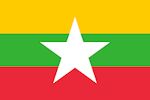
In Myanmar wird ein Wahlgesetz veröffentlicht, nach dem niemand, der vorbestraft ist, einer Partei angehören darf. Danach darf die National League for Democracy (အမျိုးသား ဒီမိုကရေစီအဖွဲ့ချုပ်) nur dann zur Wahl antreten, wenn sie Aung San Suu Kyi (အောင်ဆန်းစုကြည်, 1945 - ) aus der Partei ausschließt.
Abb.: Myanmar
[Bildquelle: CIA. -- Public domain]
2010-03-03


Um China nicht zu verärgern verweigert die Thai-Botschaft in New Delhi (Indien) der jüngeren Schwester des 14. Dalai Lama (བསྟན་འཛིན་རྒྱ་མཚོ་), Jetsun Pema (རྗེ་བཙུན་པདྨ, 1940 - ), das Visum für Thailand. Jetsun Pema wollte an einer Kulturveranstaltung in Bangkok teilnehmen.
Abb.: Jetsun Pema (རྗེ་བཙུན་པདྨ), 2009
[Bildquelel: VoA / Wikipedia. -- Public domain]
2010-03-05
Der Fernsehsender Spring News (สปริงนิวส์) beginnt mit dem Testbetrieb.
Abb.: ®Logo
"Spring News is a Thai Television news channel owned by Spring News Television Ltd. part of News Network Corporation PCL. (formerly Solution Corner 1998 PCL.) Spring News debuted on satellite television via test broadcast on 5 March 2010. Its official launch of Spring News was on 15 December 2010
Spring News won the licence for Digital television for news and information channel from NBTC's spectrum auction in 2013. Spring News started broadcasting on Digital Television from 1 April 2014 on LCN Channel 19.
ProgrammingNon-News Live Programming
- Spring News broadcast 24-hour rolling news coverage throughout the day called "The Phenomoneon of Real News" (ปรากฎการณ์ข่าวจริง) with exception of variety programming and infotainment program on weekends. Rolling news start at 6am (ICT) and News Updates ever Top of the hours and "HOT NEWS" every half-hour.
- Live Telecast of Thai lottery (สลากกินแบ่ง) draw every 1st and 16th of every month at 14.30–16.00 (ICT) (simulcast Second and last hour with National Broadcasting Services of Thailand - สถานีวิทยุโทรทัศน์แห่งประเทศไทย)
- Suk Asawindum SpringNews (ศึกอัศวินดำสปริงนิวส์) live telecast of Muay Thai Kickboxing (มวยไทย) every Sunday at 11.00–13.00 (ICT) (Formerly aired on Channel 9 MCOT HD moved to Spring News from 20 September 2015)"
[Quelle: https://en.wikipedia.org/wiki/Spring_News. -- Zugriff am 2017-01-02]
2010-03-12
Provinz Surat Thani (สุราษฎร์ธานี): fünf Bombenanschläge. Keine Verletzten.
Abb.: Lage der Provinz Surat Thani (สุราษฎร์ธานี)
[Bildquelle: OpenStreetMap. -- Creative Commons Lizenz (Namensnennung, share alike)]
2010-03-12 - 2010-05-19
"Million Man March" (ขบวนล้านมวลชน): "Rothemden (เสื้อแดง)" (UDD - United Front for Democracy against Dictatorship - นวร่วมประชาธิปไตยต่อต้านเผด็จการแห่งชาติ) demonstrieren in Bangkok gegen die Regierung von Ministerpräsident Abhisit.
2010-03-13
Titelschlagzeilen der Bangkok Post: "Red rage rising" "UDD rural hordes head for the capital"
Abb.: Titelblatt
[Fair use]
2010-03-14
Rund 100.000 "Rothemden (เสื้อแดง)" (United Front for Democracy against Dictatorship - นวร่วมประชาธิปไตยต่อต้านเผด็จการแห่งชาติ) demonstrieren in Bangkok gegen die Regierung von Ministerpräsident Abhisit. In den folgenden Wochen kommt es zu heftigen Zusammenstößen zwischen Sicherheitskräften und Rothemden (เสื้อแดง).
"Rothemden (เสื้อแดง) Zusammensetzung
Für die University of California untersuchten Naruemon Thabchumpon (นฤมล ทับจุมพล, 1962 - ) und Duncan McCargo (1963 - ) zwischen dem 15. März und dem 20. Mai die soziale Zusammensetzung der Demonstranten. Dafür führten sie 400 Interviews, darunter mit vielen Rothemdfunktionären auf Gemeindestufe, an den Zentren des Protests und befragten 57 Meinungsführer der UDD. Laut ihrer Studie arbeiteten die Demonstranten oft in der Landwirtschaft und besitzen durchschnittlich sechs Acre Land. Ein großer Teil der Rothemden (เสื้อแดง) setzte sich aus Arbeitsmigranten zusammen, die zwar die meiste Zeit in Bangkok lebten, aber in ihren Heimatdörfern wählten. Die Mehrheit der Befragten war zwischen 40 und 60 Jahre alt und konnte sich noch an die Zeit erinnern als Elektrizität und Fernsehen in den Dörfern Einzug nahm. Etwa ein Drittel der Demonstranten besaß nur Grundschulbildung, ein Drittel lernte auf einer weiterführenden Schule und das restliche Drittel verfügte über Hochschulbildung. Über 40 Prozent verdienten mehr als 10.000 Baht im Monat und etwa 30 Prozent mussten mit weniger als 5.000 Baht auskommen.[13]
[Bildquelle: Genrator / Wikipedia. -- Creative Commons Lizenz (Namensnennung, share alike)]Die befragten Meinungsführer bezeichneten sich zumeist selbst als Landwirte, führten aber in der Regel ein Geschäft und besaßen verschiedene Einkommensquellen. Außerdem befanden sich überdurchschnittlich viele Radiomoderatoren und Regionalpolitiker unter ihnen. Mehr als 3/4 profitierten von den verschiedenen Subventionenprojekten aus der Zeit von Thaksin Shinawatra (ทักษิณ ชินวัตร, 1949 - ) und alle waren Nutznießer des Gesundheitsprogramms aus der Ära. Außerdem gab ein großer Teil von ihnen an, Zuwendungen von im Ausland arbeitenden Verwandten zu bekommen.[13]
FührungsstrukturAls bekannteste Mitglieder der Führungsstruktur der UDD galten der ehemalige Generalsekretär der Demokratischen Partei und stellvertretender Innenminister in den 1980ern, Veera Musikapong (วีระกานต์ มุสิกพงศ์, 1948 - ), das ehemalige Parlamentsmitglied Jatuporn Prompan (จตุพร พรหมพันธุ์, 1965 - ) und der frühere Regierungssprecher Nattawut Saikua (ณัฐวุฒิ ใสยเกื้อ, 1975 - ).[14]
Diese professionellen Politiker stehen im Kontrast zu verschiedenen akademischen und sozialen Personen in der Bewegung. Dazu zählen der Universitätslektor und Menschenrechtsaktivist Jaran Dithapichai und der Mediziner und frühere Anführer der Demokratiebewegung 1992, Weng Tojirakarn (เหวง โตจิราการ, 1951 - ). Wisa Khantap (วิสา คัญทัพ, 1973 - ) arbeitete als Sänger und Künstler und beteiligte sich an politischen Kampagnen und Woraphon Phrommikabut leitete früher die Fakultät für Soziologie und Anthropologie der Universität Bangkok (มหาวิทยาลัยกรุงเทพ).[14]
Als dritte Gruppe in der Führungsschicht präsentierten sich populistische Einpeitscher wie der frühere Popsänger und Aktivist des Mai 1992, Arisman Pongruangrong (อริสมันต์ พงศ์เรืองรอง,1964 - ), der bekannte Radiomoderator Kwanchai Praiphana, das ehemalige Mitglied des Parlaments Suporn Atthawong (auch bekannt als Rambo Isan) und der Komiker Yoswaris Chuklom (auch bekannt als Jaeng Dokjik).[14]
Als Vertreter einer harten Linie galten verschiedene Mitglieder der Familie von Thaksin Shinawatra, wie seine Schwester und spätere Premierministerin Yingluck Shinawatra (ยิ่งลักษณ์ ชินวัตร, 1967 - ) und eine Gruppe innerhalb der UDD namens Red Siam. Offiziell leitete diese Gruppe der im selbstgewählten Exil lebende Jakrapob Penkair (จักรภพ เพ็ญแข, 1967 - ) und im Inland fungierte Surachai Danwattananusorn (1940/41 - ) als ihr Aushängeschild. Außerdem trat eine militärische Fraktion rund um den früheren Generalmajor Khattiya Sawasdipol (ขัตติยะ สวัสดิผล, 1951 - 2010; auch bekannt als Seh Daeng) als Hardliner in Erscheinung.[14]
Als Lehre aus den fehlgeschlagenen Protesten in 2009 entwickelte die Bewegung das Motto der drei Verbote.[14]:
- ti fa; greif nicht den Himmel an (Mit Himmel sind die traditionellen Institutionen Thailands – wie die Monarchie – gemeint)
- da tho; engagiere dich nicht in verbalen Angriffen
- kokhwamrunraeng; agiere nicht mit Gewalt
In der Praxis ergaben sich daraus aber Probleme, da die UDD ein weites Feld von politischen Strömungen in ihren Reihen vereinigte. Unter den Anführern befanden sich sowohl ehemalige Kommunisten als auch Personen mit nationalistischen Einstellungen. Teilweise bekämpften sie sich in den 1970ern noch gegenseitig. Die verschiedenen Strömungen innerhalb der Bewegung erschwerten eine politische Entscheidungsfindung erheblich. Dass sich Thaksin Shinawatra im Exil befand und nicht klar war, welche Gruppe jeweils seine Unterstützung hatte, verkomplizierte die Situation zusätzlich. Besonders wenn es um den Einsatz von Gewalt ging, trat dieser Umstand offen zutage.[14]
OrganisationDie Rothemden (เสื้อแดง)bewegung organisierte sich hauptsächlich in einer losen Netzwerkstruktur. In ihr engagierten sich autonome lokale Gruppen, die eigene Repräsentanten zu den Protesten schickten. In den, im Vorfeld der Proteste stattfindenden „Politischen Schulen“ entwickelten diese Organisationen eigene Aktionspläne und Strategien und stimmten sich untereinander ab. Die Schulen sorgten für die Schlüsselkontakte in der Rekrutierungsphase, verloren aber an Einfluss als die Kämpfe zunahmen. Mehr als die Hälfte der Absolventen verließ die Protestzentren nach dem Gewaltausbruch beim ersten Räumungsversuch am 10. April.[15]
Als Hauptkommunikationswege benutzten die Demonstranten Radiostationen, CD-Pressungen und gedruckte Flugblätter. Mit der Hilfe von Mobiltelefonen übertrugen sie schwer empfangbare Radiosignale zum Ort des Geschehens und verschickten Massentextnachrichten. Der Fernsehsender People’s Television (PTV, เพื่อนพ้องน้องพี่) spielte ebenfalls eine große Rolle bei der Informationsverbreitung.[15]
Die zentralen Organisatoren stellten Essen, Bühnen, Rundfunkempfang und einige große Zelte bereit. Sie bezahlten außerdem ein paar tausend Baht Fahrkostenzuschuss pro Pickup (typischerweise mit 10 Insassen), abhängig von der Entfernung, für die Reisekosten der ankommenden Rothemden (เสื้อแดง). Diese blieben etwa eine Woche bei den Protesten und anschließend ersetzte sie ein Pickup mit anderen Mitgliedern derselben Gruppe. Dieses Modell war am beliebtesten, weil es den Demonstranten die Möglichkeit gab ihren Arbeitsverpflichtungen weiterhin nachzukommen. Die Rothemden (เสื้อแดง), die in Bangkok lebten, nahmen vor allem an den Abenden an den Kundgebungen teil. Mache bezahlten andere UDD-Mitglieder für die Teilnahme beziehungsweise legten zusammen um gemeinsam einen Pickup zu unterstützen. Außerdem gab es Gerüchte über einen Schuldenerlass für Kundgebungsmitglieder nach einer neuerlichen Machtübernahme durch Thaksin Shinawatra. Niemand der Befragten musste Essens- oder Treibstoffausgaben für seine Teilnahme an den Protesten selbst bezahlen. Viele der Besucher aus den Provinzen nutzten den Aufenthalt in Bangkok nebenbei für Sightseeing und besuchten den Wat Phra Kaeo (วัดพระแก้ว) im Großen Palast (พระบรมมหาราชวัง) und den Bangkok Skytrain (รถไฟฟ้า-บีทีเอส). Als Übernachtungsmöglichkeiten fungierten vor allem Verwandte und freiwillige Gastfamilien. Sehr wenige Demonstranten blieben die ganze Zeit über vor Ort und schliefen auch dort.[15]
Motivation und ZieleDie große Mehrheit der Demonstranten versuchte durch ihren Protest die Rückkehr von Thaksin Shinawatra an die Macht durch demokratische Vorgangsweisen zu erreichen. Ihrer Meinung nach bevorzugte das Justizsystem Thailands einseitig die Unterstützer der PAD (พันธมิตรประชาชนเพื่อประชาธิปไตย) und die Demokratische Partei (พรรคประชาธิปัตย์). Einige gaben regionale Vorurteile gegen die Bewohner des Nordosten (อีสาน) Thailands als Begründung an. Nahezu alle Befragten bezeichneten sich als starke Befürworter von mehr demokratischen Wahlen auf allen Ebenen und definierten sich als Gegner des Staatsstreichs von 2006 und den verschiedenen politischen Interventionen durch die Gerichte. Die Regierung von Abhisit Vejjajiva agierte ihrer Meinung nach abgehoben und hatte keinen Kontakt mehr zum Volk.[16]
Zu ihrer politischen Meinung zu ausländischen Migranten befragt, bezeichneten die Demonstranten sie oft als Gefahr und benutzten dabei konservative nationalistische anti-burmesische Rhetorik.[16] Die Szene der Nichtregierungsorganisationen in Thailand brachten die Befragten meist mit „romantischen Illusionen“ in Verbindung.[13]
SchwarzhemdenUnter den Demonstranten befand sich eine Gruppe von Personen die unabhängig von der Farbe ihrer Kleidung „Schwarzhemden“ oder auch „Men in Black“ genannt wurden. Bei ihnen handelte es sich um militärisch geschulte und schwerbewaffnete Männer die bei verschiedenen Gelegenheiten die Sicherheitskräfte und auch Zivilisten angriffen. Es existieren zahlreiche Aufnahmen, auf denen sie beim Einsatz von AK-47- und M16-Sturmgewehren abgebildet sind. Außerdem verfügten sie über M79-Granatwerfer. Die Schwarzhemden mischten sich unter die Demonstranten und nützten sie als Deckung. Von ihnen durchgeführte überfallsartige Angriffe in Kleingruppen, legten eine Ausbildung in militärischen Taktiken nahe. Von wo die Men in Black ihre Befehle bekamen ist nicht bekannt.[17]"
[Quelle: http://de.wikipedia.org/wiki/Unruhen_in_Bangkok_2010. -- Zugriff am 2012-10-12]
Abb.: AK-47 (Автомат Калашникова образца 47) Kalschnikow
[Bildquelle: Wikipedia. -- PUblic domain]
Abb.: M16-Sturmgewehr
[Bildquelle: Dragunova / Wikipedia. -- GNU FDLicense]
Abb.: M-79-Granatwerfer
[Bildquelel: Wikiepdia. -- Public domain]
2010-03-14
"Toy", Felt pen and oil on canvas 90 x 70 cm von Sumeth Jumsai Na Ayudhaya (ดร. สุเมธ ชุมสาย ณ อยุธยา, 1939 - )
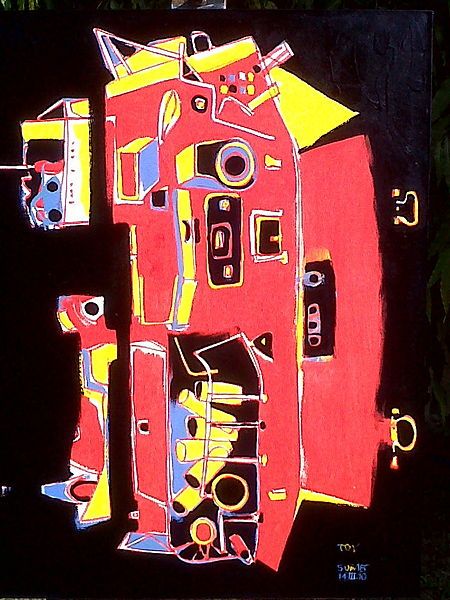
Abb.: "Toy",
Felt pen and oil on canvas 90 x 70 cm von Sumeth Jumsai Na Ayudhaya (ดร.
สุเมธ ชุมสาย ณ อยุธยา)
[Bildquelle: Sumet jumsai / Wikipedia.
-- Creative
Commons Lizenz (Namensnennung, share alike)]
2010-03-15
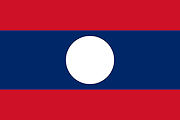
Volle Inbetriebnahme des Wasserkraftwerks Nam Theun II (ເຂື່ອນນ້ຳເທີນ 2) in Laos. 90% des erzeugten Stroms soll nach Thailand exportiert werden.
Abb.: Lage von Nam Theun II (ເຂື່ອນນ້ຳເທີນ 2)
[Bildquelle: OpenStreetMap. -- Creative Commons Lizenz (Namensnennung, share alike)]
Abb.: Nam Theun II (ເຂື່ອນນ້ຳເທີນ 2)
[Bildquelle: ©Google earth. -- Zugriff am 2011-12-20]
"The Nam Theun 2 Hydropower Project, or simply NT2, is a hydroelectric dam located on the Nam Theun River in Laos. Commercial operation of the plant began in March 2010. The scheme diverts water from the Nam Theun, a tributary of the Mekong River (ແມ່ນ້ຳຂອງ), to the Xe Bang Fai River, enabling a generation capacity of 1,070 MW, from a 350 m (1,148 ft) difference in elevation between the reservoir and the power station. It is the largest hydroelectric project so far in Laos, exporting power to Thailand and supplying the local area with electricity. At the time of signing in 2005, NT2 was the largest foreign investment in Laos, the world's largest private sector cross-border power project financing, the largest private sector hydroelectric project financing, and one of the largest internationally-financed IPP projects in Southeast Asia. The dam also marked a return by the World Bank to funding large-scale infrastructure, after a decade-long hiatus.
According to the government of Laos, "the project is an essential part of the country's development framework and the Project's implementation is likely to be the first real possibility for (Laos) to reduce gradually its dependence on Official Development Assistance".
The project has environmental and social impacts, and comprehensive measures have been designed to mitigate these. According to a group of social and environmental experts who advise on the project, these measures could become a global model. Although Newsweek magazine referred to it as a "kinder and gentler dam", the project also attracted criticism.
History and current statusThe Nam Theun 2 project was identified in the 1980s and a concession was awarded in 1993. It was subjected to a long anti-dam campaign. The project was frozen after the 1997 Asian financial crisis, but preparation resumed in 1999. In October 2002 a concession contract between the NTPC and the government of Laos was signed, followed by the signing of PPAs between NTPC on the one hand and, EGAT (การไฟฟ้าฝ่ายผลิตแห่งประเทศไทย) and the Laotian state-owned power company Electricite du Laos on the other hand in November 2003. Financial closing was reached in June 2005. The Nam Theun river diversion was created in March 2006 and then closed in April 2008 following completion of the Nakai Dam wall. Impoundment of the Nakai Reservoir occurred over the 2008 wet season and the reservoir was close to full supply level by the end of 2008. Test hydropower generation began in mid-2009 and the Commercial Operation Date was achieved in April 2010.
Technical features
NT2 enables Laos to export 995 MW of electrical energy to the EGAT. The project also uses 75 MW of capacity to supply electricity for domestic use in Laos.
Nam Theun 2 is a trans-basin diversion power plant that uses water from the Nam Theun River and releases the water into the Xe Bang Fai River. The project site is in Khammouane (ຄໍາມ່ວນ) and Bolikhamxay (ບໍລິຄໍາໄຊ) provinces in central Laos, about 250 kilometers east of Vientiane. It stretches from the Nakai Plateau to the lower Xe Bang Fai River confluence with the Mekong.
The main features of the project include:
Institutional arrangements
- 39 m (128 ft) high gravity dam
- 450 km2 (170 sq mi) reservoir
- Pressure shaft, pressure tunnel and a powerhouse
- 8,000,000 m3 (280,000,000 cu ft) artificial regulating pond, and a 27 km (17 mi) artificial downstream channel leading to the Xe Bang Fai River
- 130 km (81 mi) long, double-circuit 500 kW transmission line to the Thai grid
- 70 km (43 mi) long, single-circuit 115 kV transmission line to Laos' domestic grid.
The Project is structured as a BOT project. It has a concession period of 31 years, of which the operating period is 25 years. At the end of the concession period, the project facilities will be transferred to the government free of charge.
The project was developed by NTPC, which is owned by a consortium comprising EDF (35%), EGO of Thailand (25%), the ITD of Thailand (15%) and the Government of Laos (25%). Governments and government-owned enterprises own a majority of NTPC. This situation is atypical for an IPP - normally the power generating company is privately owned.
Laos is a People's Democratic Republic with a one-party system under the Lao People's Revolutionary Party (ພັກປະຊາຊົນປະຕິວັດລາວ). It is one of the few communist states in the world.
The government has multiple roles related to NT2, some of which may be conflicting: It partially owns NTPC and thus has an interest in the financial profitability of the project; it is supposed to monitor compliance with environmental and social safeguards under the concession contract; and it buys some of the electricity generated from the project through the state-owned power company EDL and thus has an interest in low electricity prices.
Some of the owners of NTPC are also contractors engaged in the construction of the dam. For example, EDF International is the head contractor for the entire project under a turnkey contract. It has engaged various sub-contractors for specific parts of the project.
Financial aspectsProject costs and financing
Construction costs were initially estimated at US$1,250 million plus US$331.5 million for contingencies. More recently construction costs have been given as US$ 1,3 billion.
The project base cost is funded through US$330m of equity and US$920m of debt. It is financed through equity, loans and guarantees from 26 financial institutions, including
- four multilateral development banks (the World Bank Group, the Asian Development Bank (ADB), the European Investment Bank (EIB) and the Nordic Investment Bank),
- three Export Credit Agencies (Coface of France, EKN of Sweden and GIEK of Norway),
- three bilateral financing agencies (French Development Agency, PROPARCO and the Export-Import Bank of Thailand),
- nine international commercial banks providing finance in hard currencies (grouped together in a "lead arrangers group" including BNP Paribas, Crédit Agricole Indosuez, ANZ from Australia, Société Générale, Fortis Bank and Bank of Tokyo-Mitsubishi), and
- seven Thai commercial banks providing finance in Thai Baht.
All financing in hard currencies is guaranteed through political risk insurance provided by the above-mentioned three export credit agencies, the ADB (US$ 50m), the International Development Association (IDA) of the World Bank Group (US$ 50m) and the Multilateral Investment Guarantee Agency (MIGA) of the World Bank Group (US$ 91m). Specifically, MIGA has provided a US$86 million guarantee to Fortis Bank of Belgium against the risks of expropriation, breach of contract, war and civil disturbance, as well as transfer inconvertibility in both Laos and Thailand. According to MIGA, its guarantee "was key to lowering the project's risk profile, which in turn enabled the government and developers to attract commercial financing at better rates and gave the investor the assurance needed to go ahead with the deal".
The government's initial equity contribution of $83m (25%) was largely funded by donors, including a $20 million grant from the International Development Association of the World Bank Group, the ADB (US$ 20m), France, and the EIB.
Increase in government revenue and contribution to poverty alleviationAccording to the government "the Project is an essential part of the country's development framework and the Project's implementation is likely to be the first real possibility for (Laos) to reduce gradually its dependence on Official Development Assistance." In the same vein, the then Managing Director of the World Bank, Shengman Zhang, said in 2003 "We see Nam Theun 2 not as a project per se, but as a vehicle through which to make a considerable progress in the effort of poverty reduction." [2]
The project generates three forms of revenue to the government:
- dividends,
- taxes; and
- royalties, i.e. concession fees.
Government revenue is estimated at US$1.9bn to US$2bn in nominal terms over 25 years. It has been estimated that at a 10% discount rate the net present value of the revenues will be six times higher than the net present value from the debt service, if all government equity was funded through concessionary lending. Revenues are expected to increase progressively from approximately US$ 10 million in 2009 to US$ 110 to 150 million per year at the end of the concession period in 2033. Thereafter the government will receive all revenues accruing to the project.
The Power Purchase Agreement (PPA) between EGAT and NTPC was designed as to stabilize the cash flow despite hydrological variation and consequently variation in power output. Revenues will be partially in US$ and partially in Thai Baht. Power demand from Thailand is expected to be strong. In December 2007, Thailand and Laos signed an agreement increasing the total power to be supplied by Laos to Thailand from all sources in 2015 from 5,000 MW to 7,000 MW.
The World Bank works with the Lao government to improve public financial management practices and increase transparency in order to increase the likelihood that revenues will be used to benefit the poor, including through investment in health and education. The Government has agreed with the World Bank to implement a Poverty Reduction Fund that is being initially sourced from International Development Association funds, and then from the Government's taxes, royalties and dividend revenues once the project commences operation. Special administrative units are being established to deal with the effective management and allocation of the financial resources gained from the Project.
In 2007 Laos was ranked on the Corruption Perception Index by Transparency International 168 out of 179 countries assessed, making it one of the most corrupt countries on the index.
Environmental and social impactsEnvironmental and social impacts of the project include downstream impacts, impacts on biodiversity, resettlement and reservoir sedimentation. More details can be found in the Environmental and Social Impact assessment], and in the summary provided for the various impacts below.
Monitoring and Evaluation
NT2 has a multi-layer environmental and social monitoring and evaluation mechanism consisting of the following elements:
- A Panel of Environmental and Social Experts (POE), reporting to the government. The POE normally visits Laos at least once per year.
- An International Advisory Group(IAG), advising the World Bank. The IAG normally visits Lao PDR at least once per year.
- Independent Monitoring Agencies, reporting to the Government. The Independent Monitoring Agencies was in the process of being contracted in December 2006.
- The Lenders’ Engineer[10]
Praise
The comprehensive environmental and social measures designed to mitigate potential environmental and social impacts could become a "global model", according to a group of social and environmental experts who advise on the project.
Criticism
According to the NGO International Rivers, there have been substantial shortcomings in the mitigation of impacts. According to the organization, compensation payments and replacement land for villagers affected by construction activities have been "inadequate, unfair or non-existent". Poor resettlement planning has led to housing and infrastructure delays. Plans to restore the livelihoods of villagers on the Nakai Plateau and along the Xe Bang Fai have yet to be finalized. And the budget for the downstream program in particular is said to be woefully inadequate.
A good or a bad dam?
According to data in the World Bank publication "Good dams, bad dams", the ratio of area flooded and people resettled per Megawatt of installed electricity generating capacity (flooded area of 41 hectare per MW and 5 people resettled per MW) is neither very high, nor very low, compared to 48 other large dams analyzed. Using this specific analytical framework, Nam Theun 2 could neither be considered a "good" or a "bad" dam.
Downstream impacts in Xe Bang FaiThe flow of water in the Xe Bang Fai (XBF), which will receive the water diverted through NT2, will increase significantly, thus affecting the population living downstream of the release point.
The exact number of people affected is disputed. While NTPC speaks of 40,000 affected people, the NGO Environmental Defense speaks of up to 150,000 people. The impacts have been widely studied and have been discussed with local communities that will be affected. Possible negative impacts on the downstream population include the washing away of river-bank gardens, changes in water quality, and impacts on fisheries. The impacts will only be exactly known once the project has been completed.
NTPC has promised to stop power production when floods occur on the XBF river. However, it is as yet unknown exactly how long this flooding period will last for each year. The length of the period will affect the project's profitability.
Water quality may be negatively impacted through fouling of biomass in the reservoir. Because the impacts are unknown, monitoring systems will be included and a commitment has been made to "adaptive management".
Livelihood development programs are underway for the villagers living downstream on the XBF river, in districts such as Mahaxai. The programs are focused on agriculture, fish ponds and handicrafts to help them generate income beyond that derived from river fishing. The objective is to help villagers generate money from a variety of different sources to compensate for any changes in fishing catches after the river diversion. Affected communities expect to receive irrigation systems to allow for a second, dry season rice crop, drinking water systems and access to electricity. The provision of this infrastructure would not be the responsibility of NTPC, but of the government. Details of the these programs are available on the operating company's website.
According to a joint progress report issued by the World Bank and the ADB in December 2007 implementation of the downstream program – particularly on implementing livelihood programs – remained a challenge. Lessons from the 20 villages where the programs have been piloted in a participatory manner are being applied as other villages were included. Micro-credit schemes that are being developed were not yet on a sustainable financial footing.
Downstream impacts on the Nam Theun RiverThere is relatively little information on downstream impacts on the Nam Theun River, where water flows will be significantly reduced. No permanent villages lie along the Nam Theun some 50 km downstream below the dam. Fishermen and hunters, however, do use this stretch of the river. Fish diversity and abundance is expected to be affected by reduced water flows and sediment content.[15] However, monitoring of the villages along the river conducted by NTPC has so far not detected any significant impacts to the fishery.
Biodiversity and forestsThree existing protected areas on the Nakai plateau (the Nakai-Nam Theun, the Hin Nam Nor and the Phou Hin Poun National Biodiversity Conservation Areas), together nine times larger (4,106 km2) than the flooded area, are expected to be better managed through significant resources made available under the project - more than 60 times what the government has spent on its entire national parks system so far. The flooded areas are not considered critical natural habitat. There used to be significant illegal logging in the protected areas, which the government claims has now been largely brought under control. Detailed fish surveys showed that there are no fish species living only in the stretch of the river that will be inundated. A management plan for the Asian elephants in the area has been drawn up. A Watershed Management Protection Authority (WMPA) has been established with the specific purpose of protecting the watershed of the reservoir and the protected areas in it. WPMA will receive US$1 million annually from NTPC through the concession period.
Resettlement
6,300 people from 17 villages moved from the area that became the NT2 reservoir on the Nakai Plateau to custom-built villages built in consultation with the resettled communities. NTPC and the Lao Government have committed to doubling the income of resettled villagers, through livelihood programs, five years after they have been relocated. This means that people who used to make US$410 per household a year in 2005 should make at least US$820 per household a year by 2012.
Construction of the villages and major facilities (new roads, water pumps, toilets, schools, mills and electricity) was completed by mid-2008. Extensive consultations on house design, location and even construction materials were held and continue to ensure the outcomes reflect the wishes of the local people. According to a World Bank report, the health of villagers who have already been resettled has significantly improved due to better water and sanitation, regular health check-ups and the provision of mosquito nets, as documented by various assessments. Various experts are helping the resettled villagers to adopt improved practices to increase agricultural and income productivity. However the report stresses that the pace of the development of the livelihood activities must be accelerated including engaging additional technical assistance to help villagers develop the most effective cropping systems possible.8]
Reservoir sedimentationAt current sedimentation rates, the reservoir has a lifetime of more than five centuries. If substantial logging occurred in the upstream basin, the lifetime would be accordingly reduced and could affect the financial and economic viability of the project. This would especially be the case if sediments remained in the active storage area in the upper part of the reservoir instead of being washed into the dead storage area closer to the dam in the lower part of the reservoir. The establishment of the relatively well-funded Watershed Management Protection Authority is expected to protect forest cover and thus limit erosion in the watershed of the reservoir."
[Quelle: http://en.wikipedia.org/wiki/Nam_Theun_2. -- Zugriff am 2011-12-20]
2010-03-16

Dortmund (Deutschland): Solidaritätsveranstaltung von 50 Rothemden (เสื้อแดง). Vortrag von Giles Ji Ungpakorn (ใจ อึ๊งภากรณ์, 1953 - ) sowie Telefongespräch mit Jakrapob Penkair (จักรภพ เพ็ญแข. 1967 - ).
Abb.: Lage von Dortmund
[Bildquelle: OpenStreetMap. -- Creative Commons Lizenz (Namensnennung, share alike)]
2010-03-17
Rothemden (เสื้อแดง) verschütten ihr vorher in Behälter abgefülltes Eigenblut vor Premierminister Abhisit Vejjajivas Amtssitz, um symbolisch ein Opfer für die Demokratie zu bringen.
2010-03-17
Die UDD (United Front for Democracy against Dictatorship - นวร่วมประชาธิปไตยต่อต้านเผด็จการแห่งชาติ) distanziert sich öffentlich von den Militanten, d.h. den Gruppen
- Daeng Siam (แดงสยาม, Rotes Siam)
- 24th of June Group
sowie Khattiya Sawasdipol (ขัตติยะ สวัสดิผล aka Sae Daeng - เสธ แดง, 1951 - 2010)
Diese Gruppierungen sind aber weiterhin bei den Demonstrationen präsent
2010-03-20
Abb.: Fußklapper als Symbol der Verachtung für die Anti-Thaksin-Kräfte, 2010-03-20
[Bildquelle: Takeaway / Wikipedia. -- GNU FDLicense]
2010-03-21
Popsänger Tom Jones (geb. 1940) tritt in der Impact Arena (อิมแพ็ค อารีน่า) vor vermutlich 5000 Zuschauern auf.
Künstlerlink auf Spotify:
URI: spotify:artist:1T0wRBO0CK0vK8ouUMqEl5
URL: https://open.spotify.com/artist/1T0wRBO0CK0vK8ouUMqEl5
Abb.: Lage der Impact Arena (อิมแพ็ค อารีน่า)
[Bildquelle: OpenStreetMap. -- Creative Commons Lizenz (Namensnennung, share alike)]
Abb.: Tom Jones, 2009
[Bildquelle: Burns!. -- http://www.flickr.com/photos/mykalburns/3615857817/. -- Zugriff am 2012-10-30. -- Creative Commons Lizenz (Namensnennung)]
2010-03-29
Zweitägige Verhandlungen zwischen der Regierung und den Rothemden (เสื้อแดง) scheitern. Es wird eine Weiterführung der Kundgebungen angekündigt.
2010-03-30
Thailand versucht auf der Tagung der Convention on International Trade in Endangered Species of Wild Fauna and Flora (CITES) in Qatar zu erreichen, dass Thailand von der Liste des illegalen Handels mit Elfenbein gestrichen wird; jedoch ohne Erfolg. Thailand gilt als einer der größten Umschlagplätze von Elfenbein, neben Japan und China.
Im vergangenem Monat beschlagnahmten die Behörden am Flughafen Suvarnabhumi 239 Stoßzähne mit einem Gesamtgewicht von 2 Tonnen und einem Wert von ungefähr 120 Millionen Baht.
Abb.: ®Logo
[Bildquelel: Wikipedia. -- Fair use]
2010-04-01
Tod von Lek Nana (เล็ก นานา, 1924 - 1910).
Abb.: Nana Entertainment Plaza, Bangkok, 2009
[Bildquelle: Patrik Ragnarsson. -- http://www.flickr.com/photos/dentarg/3210682814/. -- Zugriff am 2012-04-08. -- Creative Commons Lizenz (Namensnennung, keine kommerzielle Nutzung)]
Abb.: Lage des Nana Entertainment Plaza und der Sukhumvit Road (ถนน สุขุมวิท)
[Bildquelle: OpenStreetMap. -- Creative Commons Lizenz (Namensnennung, share alike)]
"Lek Nana (Thai: เล็ก นานา; (* 1924; † 1. April 2010 in Bangkok) war ein thailändischer Geschäftsmann und Politiker. Biografie
Lek Nana stammte aus einer aus Indien nach Thailand eingewanderten muslimischen Familie und gehörte am 6. April 1946 neben Kuang Abhayawongse (ควง อภัยวงศ์, 1902 - 1968) zu den Gründern der Demokratischen Partei (พรรค ประชาธิปัตย์, Phak Prachathipat). Später wurde er mehrfach als Kandidat der DP zum Mitglied des Abgeordnetenhauses (Saphaputhan Ratsadon) gewählt.
Im Februar 1975 wurde er von Premierminister Seni Pramoj (เสนีย์ ปราโมช, 1905 - 1997) zum Stellvertretenden Außenminister in dessen Kabinett berufen. Dieses Amt behielt er auch in der nachfolgenden Regierung von Kukrit Pramoj und wiederum von Seni Pramoj bis zu dessen Sturz im Zuge der Studentenproteste an der Thammasat-Universität (มหาวิทยาลัยธรรมศาสตร์) im Oktober 1976. Er war damit Vertreter und enger Mitarbeiter der Außenminister Chatichai Choonhavan (ชาติชาย ชุณหะวัณ, 1920 - 1998) und Bhichai Rattakul (พิชัย รัตตกุล, 1926 - ).
Im Anschluss war er bis 1981 Honorargeneralkonsul des Irak in Thailand.
Nachdem Bhichai Rattakul 1982 Vorsitzender der Demokratischen Partei wurde, wurde er von diesem im April zum Generalsekretär der Partei berufen. Dieses Amt hatte er bis April 1986 inne.
Am 28. August 1985 ernannte ihn Premierminister General Prem Tinsulanonda (เปรม ติณสูลานนท์, 1920 - ) nach dem Selbstmord von Damrong Latthapipat zum Minister für Wissenschaft und Technologie in dessen Kabinett, dem er bis zum 5. August 1986 angehörte.
Zuletzt war er Mitglied des Beratungskomitees der Partei und legte schließlich 2003 auch dieses politische Amt nieder.
Daneben war er ein erfolgreicher Geschäftsmann und galt als einer der größten Grundbesitzer in Bangkok. Die „Nebenstraße 4“ (ซอย 4 - Soi 4) der Thanon Sukhumvit (ถนน สุขุมวิท, Sukhumvit-Straße) wurde nach ihm als „Soi Na Na“ (ซอยนานา) benannt. Darüber hinaus stiftete er Grundstücke an der Thanon Rama IV (ถนนพระรามที่ 4 . Rama-IV.-Straße) in Soi Setsiri an die Demokratische Partei zur Errichtung der Parteizentrale. Außerdem stiftete er Grundstücke zur Errichtung des Princess Mother Memorial Park (อุทยานเฉลิมพระเกียรติสมเด็จพระศรีนครินทราบรมราชชนนี) sowie eines Krankenhauses. Lek Nana war insbesondere Eigentümer von Grundstücken entlang der Thanon Sukhumvit, an der eine Station (สถานีนานา) des Bangkok Skytrain (รถไฟฟ้า-บีทีเอส), das Nana Hotel (นานา โฮเต็ล) sowie das Rotlichtviertel Nana Plaza nach ihm benannt sind."
[Quelle: http://de.wikipedia.org/wiki/Lek_Nana. -- Zugriff am 2012-04-08]
2010-04-03
Rothemden (เสื้อแดง) besetzen die Ratchaprasong-Kreuzung („Ratprasong“, แยกราชประสงค์). Diese liegt im Stadtteil Pathum Wan (ปทุมวัน) in der unmittelbaren Umgebung verschiedener Einkaufszentren und Hotels. Sie bleibt das Zentrum der Bewegung.
Abb.: Von Rothemden (เสื้อแดง) besetzte Straßen
[Bildquelle: OpenStreetMap. -- Creative Commons Lizenz (Namensnennung, share alike)]
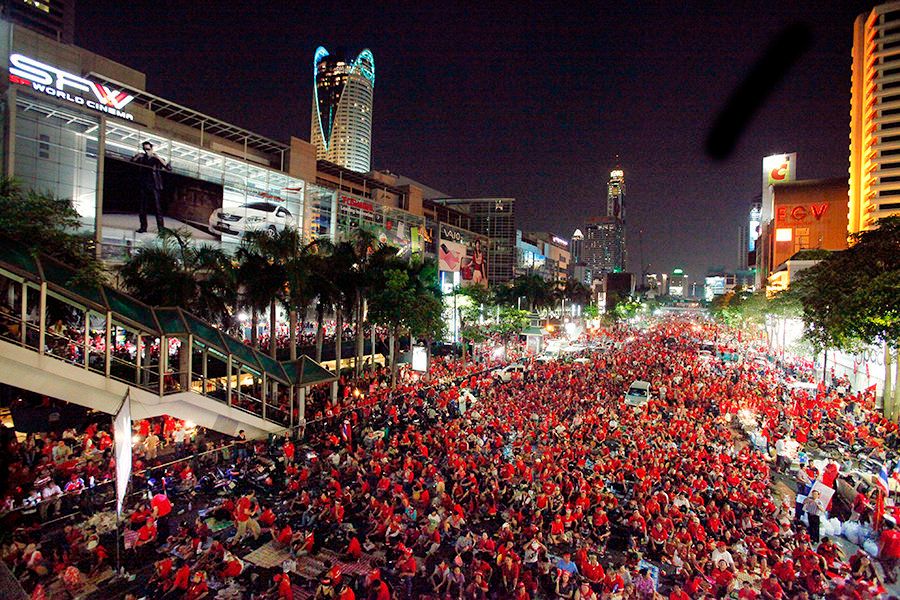
Abb.: Demonstration der Rothemden (เสื้อแดง), 2010-04-03
[Bildquelle: Moomoo / Wikipedia. -- Public domain]
2010-04-07
Sturm von Regierungsgegnern auf das Parlamentsgebäude (อาคารรัฐสภาไทย). Kabinetts- und Parlamentsmitglieder fliehen. Die Regierung gründet das Centre for the Resolution of the Emergency Situation (CRES, ศูนย์อำนวยการแก้ไขสถานการณ์ฉุกเฉิน) mit einem umfangreichen Mandat zur Wiederherstellung der Ordnung im Land. Das CRES setzte sich aus zahlreichen ranghohen Politikern, Staatsbeamten und Militärs zusammen und stand unter der Leitung von Innenminister und Vizepremierminister Suthep Thaugsuban (สุเทพ เทือกสุบรรณ, 1949 - ).
Abb.: Lage des Parlamentsgebäudes (อาคารรัฐสภาไทย)
[Bildquelle: OpenStreetMap. -- Creative Commons Lizenz (Namensnennung, share alike)]
Abb.: Suthep Thaugsuban (สุเทพ เทือกสุบรรณ) (links), 2010
[Bildquelle: Photographer attached to the Prime Minister of the Kingdom of Thailand : Peerapat Wimolrungkarat / พีรพัฒน์ วิมลรังครัตน์. -- http://www.flickr.com/photos/thaigov/5235478688/in/set-72157625408981569/. -- Zugriff am 2012-10-12. -- Creative Commons Lizenz (Namensnennung)]
2010-04-08
Die Regierung ruft am Abend den Ausnahmezustand aus. Dieser ermächtigte das CRES (Centre for the Resolution of the Emergency Situation; ศูนย์อำนวยการแก้ไขสถานการณ์ฉุกเฉิน), Verdächtige bis zu 30 Tage an inoffiziellen Orten festzuhalten und zu verhören. Die Mitarbeiter des CRES sind bei diesen Handlungen größtenteils immun gegen Strafverfolgung. Die Anzahl der so festgehaltenen Personen wird nicht bekannt gegeben.
Außerdem schließt das CRES in der Zeit der Unruhen etwa 1.000 Webseiten, eine Fernsehstation, mehrere Onlinefernsehsender und mehr als 40 Radiostationen, die die Regierung mit der UDD (แนวร่วมประชาธิปไตยต่อต้านเผด็จการแห่งชาติ) in Verbindung gebracht hatte.
2010-04-08/09

ASEAN Gipfeltreffen in Hanoi (Vietnam): Einsetzung einer Kommission zum Schutz der Rechte von Frauen und Kindern.
Abb.: Lage von Hanoi (Vietnam)
[Bildquelle: OpenStreetMap. -- Creative Commons Lizenz (Namensnennung, share alike)]
2010-04-09
Rothemden (เสื้อแดง) erstürmen die bedeutendste Satellitenstation des Landes, um dem blockierten Fernsehsender der Rothemden (เสื้อแดง), People’s Television (PTV, เพื่อนพ้องน้องพี่), den Betrieb wieder zu ermöglichen.
"People's Television (PTV, เพื่อนพ้องน้องพี่) was a Thai satellite television station. It was established by former executives of the Thai Rak Thai party (พรรคไทยรักไทย) after the 2006 Thailand military coup overthrew the Thai Rak Thai-led government. It launched despite warnings from the Council for National Security (คณะมนตรีความมั่นคงแห่งชาติ), the military junta that seized power. PTV executives insisted that if ASTV (a satellite television station run by anti-Thai Rak Thai activist and media tycoon Sondhi Limthongkul - สนธิ ลิ้มทองกุล / 林明達, 1947 -) could operate, then so could PTV.[1] PTV's inaugural broadcast on 1 March 2007 was stopped because of CAT Telecom's (กสท โทรคมนาคม) refusal to grant an internet link from Bangkok to a satellite up-link station in Hong Kong. CAT Telecom claimed that it never received PTV's application for internet access. PTV executives claimed that CAT Chairman and junta leader Saprang Kalayanamitr (พลเอก สพรั่ง กัลยาณมิตร, 1948 - ) was preventing it from broadcasting for political reasons.[2]
PTV executives led several public protests against the junta's censorship. In a demonstration on 23 March 2007 attended by 1,500-3,000 protestors, thousands of police in riot gear attempted to disperse the protest.[3][4][5] The protests caused the junta to request that the government declare emergency rule in Bangkok.
PTV was controversially shut down by Prime Minister Abhisit Vejjajiva in the early days of the 2010 Thailand political protests.
Leadership and visionThe new television station was led by former Thai Rak Thai Party executives Veera Musikapong (วีระกานต์ มุสิกพงศ์, 1948 - ), Jatuporn Prompan (จตุพร พรหมพันธุ์, 1965 - ), and Nattawut Saikua (ณัฐวุฒิ ใสยเกื้อ, 1975 - ), as well as former government spokesman Jakrapob Pankair (จักรภพ เพ็ญแข, 1967 - ) . Veera denied that any funding for the station came from former Thai Rak Thai party leader Thaksin Shinawatra (ทักษิณ ชินวัตร, 1949 - ). Thaksin lawyer, Noppadon Pattama (นพดล ปัทมะ, 1961 - ), likewise denied any involvement between Thaksin and PTV.[6]
Veera claimed that PTV aimed to serve the public by acting like "a small candle shedding the light of truth." He added that "In the past, the channels of communication that served the nation were limited, and we saw no hope for the future. If a station that helps people constructively exchange views exists, it will help the country maintain its democracy." After the 2006 Thailand coup, all other Thai television stations were censored and forbidden from reporting on the activities of Thaksin. Foreign broadcasts by BBC and CNN were also censored.
PTV is operated by Peuan Pong Nong Phi (Thai: เพื่อนพ้องน้องพี่) Co. Ltd. Peuan Pong Nong Phi was founded in 2002 by students from Ramkhamhaeng University (มหาวิทยาลัยรามคำแหง). It originally produced print media and was established with registered capital of 5 million baht. Prior to commencing broadcasting, its registered capital was increased to 50 million baht, most of the capital coming from the new management. Jatuporn Promphan claimed that further capital would be raised from the public.[7]
Legal status and controversiesBoth PTV and ASTV transmitted their programs via satellite from earth stations outside of Thailand to cable TV operators inside the kingdom. Both stations claimed that this practice allowed them to run on cable television without being subjected to the government's broadcast regulatory bodies.[8]
Minister to the Prime Minister's Office Thirapat Serirangsan (ธีรภัทร์ เสรีรังสรรค์, 1955 - ) ordered the Director-General of the Public Relations Department to press legal charges against PTV. He insisted that no double standards were being applied. "If PTV insists on going on the air, the director-general of the Public Relations Department, as the officer in charge, will have to take legal action, just as ASTV has also been legally pursued since the last government," said Thirapat, referring to ASTV's pending court injunction. Thai Day Dot Com Co, the operator of ASTV, filed a criminal lawsuit against the Public Relations Department, alleging that it abused its powers when questioning ASTV's legal status. During the last days of the Thaksin government, the Administrative Court granted ASTV's request for an injunction to stop authorities from taking it off the air while the court is considering its petition.[6][9]
Station executive Veera claimed that Article 3 of the junta's interim constitution guaranteed the right to engage in broadcasting all activities in accordance with the law.[1]
Former opposition and Democrat Party (พรรคประชาธิปัตย์) leader Abhisit Vejjajiva (อภิสิทธิ์ เวชชาชีวะ, 1964 - ) advised the junta to ensure equal treatment for both PTV and ASTV.[6]
PTV newsmen were refused press passes to Government House on grounds they had not yet accredited.[10]
Defence Minister Boonrawd Somtas claimed that the station received financial support from an "old power clique." PTV executives consistently denied they have direct links or received funding from ousted Prime Minister Thaksin Shinawatra or his Thai Rak Thai Party. PTV executives sued the Defence Minister for defamation. The executives also planned to file a civil case against General Boonrawd for 50 million baht.[11]
After a bomb was exploded outside of Chitrlada Palace (พระตำหนักจิตรลดารโหฐาน) in early May 2007, junta leader Sonthi Boonratkalin (สนธิ บุญยรัตกลิน, 1946 - ) claimed that the "old power group" was behind it, and told the press to ask PTV to learn more.[12]
ProtestsStation executives held several demonstrations in Sanam Luang (สนามหลวง) to protest the junta's ban against the station's broadcasts.[13] In one demonstration, 1,800 police in riot-gear surrounded approximately 1,500-3,000 protestors and attempted to dismantle PTV's protest stage. The operation was an implementation of security operation plan Pathaphi 149, which was designed to protect the army from public rallies.[5][14] However, the police backed off after the protesters threw plastic bottles and yelled at them. PTV executives asked the demonstrators not to attack the police.[3][4][5] Station executives vowed to stage weekly Friday rallies.[15] Junta chief Sonthi Boonyaratkalin vowed to prosecute any former Thai Rak Thai leaders if they provided financial support for the rallies.[16]
Junta chief Sonthi Boonyaratkalin requested Prime Minister Surayud Chulanont (สุรยุทธ์ จุลานนท์, 1943 - ) to declare emergency in Bangkok on 28 March 2007 in response to the protests. In an interview, he noted that the protests had so far been peaceful, but that he was afraid the movement could lead to "mutiny and chaos in the country."[17] CNS Spokesman Sansern Kaewkamnerd asked, "What will we do if the numbers of protesters go beyond 100,000? It will greatly damage the country's image." Emergency powers allowed the government to ban public gatherings, impose curfews and censor local news reports.[18] Surayud did not comply with the request.
A PTV rally in Bangkok City Hall's Lan Khon Muang grounds on 30 March 2007 was attended by 4,000 people. The rally proceeded under tight security.[19] The Bangkok city government positioned more than 10 municipal garbage trucks full of rotting refuse next to the protest area.[20]
Follow-on protests were planned for Sunday 7 April 2007. Defence Minister Boonrawd Somtas (บุญรอด สมทัศน์, 1941 - )warned that the military would not tolerate protests against the junta, and that "whoever tries to cause trouble in the country is nothing else but a traitor," adding that the PTV protesters intended to undermine harmony in the country.[21]
Junta leaders threatened a third time to declare a state of emergency due to PTV's planned protests on 27 April 2007.[22]
Protests organized by PTV and attended by PTV's executives escalated. In July 2007, Veera Musikapong led thousands of protestors in a demonstration outside the house of Privy Councilor Prem Tinsulanonda (เปรม ติณสูลานนท์, 1920 - ), claiming that he was behind the 2006 coup and the military junta. The government impeded the protests and cracked down on the protestors, wounding many. Several protestors were arrested, including Veera, an interim National Human Rights Commissioner, and a former Chief Justice of the Criminal Court.[23] Afterwards, junta chief Sonthi Boonyaratklin visited Prem to apologise for the protests on behalf of the government. One day later, Prime Minister Surayud Chulanont, along with 34 members of his Cabinet, went to Prem's house to apologize to Prem for "apologise for failing to take good care of him." Surayud accused the protestors of trying to "bring down the highest institution of the country."[24]"
[Quelle: http://en.wikipedia.org/wiki/People%27s_Television. -- Zugriff am 2012-10-12]
2010-04-10
Als Regierungstruppen am Nachmittag und Abend des 10. April dabei scheitern, die Demonstranten an der Phan-Fah-Brücke (สะพานผ่านฟ้า)zurückzudrängen, kommt es zu gewaltsamen Kämpfen mit den Demonstranten. Militär und Polizei stürmen das besetzte Hauptgeschäftsviertel. Sie stoßen auf Widerstand von Schwarzhemden, die mit Sturmgewehren und Granatwerfern bewaffnet sind. Außerdem greifen Aktivisten sie mit Pistolen, Schleudern und selbstgebauten Spreng- und Brandsätzen an. Unbekannte töten den Befehlshaber der Truppen, Oberst Romklao Thuwatham (พันเอกร่มเกล้า ธุวธรรม, 1966), mithilfe eines Granatwerfers und verletzten mehrere der bei ihm stehenden Offiziere. Romklao Thuwatham war schon im Vorfeld bekannt, weil er im April 2009 die militärische Auflösung der Proteste der UDD in Bangkok an der Dindaeng-Kreuzung leitete, den Einsatz in der Folge vor dem Parlament verteidigte und dabei die Rothemden (เสื้อแดง) der Gewalt bezichtigte. Die Militäreinheiten ziehen sich in Panik zurück und setzen scharfe Munition ein. Nach Angaben der Regierung sterben 26 Menschen und es werden mindestens 850 verletzt. Unter diesen sind fünf tote und 350 verwundete Soldaten. Am Baderitual des Leichnams von Romklao am 12. April nimmt die Königin und der Kronprinz teil
Abb.: Romklao Thuwatham (พันเอกร่มเกล้า ธุวธรรม)
[Bildquelle: th.Wikipedia. -- Public domain]
2010-04-11
Abb.: Rothemden (เสื้อแดง) mit symbolischen Särgen für ihre Gefallenen, 2010-04-11
[Bildquelle: K.rol2007. -- http://www.flickr.com/photos/21086912@N06/4610974882. -- Zugriff am 2012-10-17. -- Creative Commons Lizenz (Namensnennung)]
2010-04-11 - 2010-05-19

Ein chronologischer Bericht der Ereignisse aus Sicht eines italienischen Augenzeugen ist:
Sopranzetti, Claudio: Red journeys : inside the Thai red-shirt movement. -- Chiang Mai : Silkworm, 2012. -- 137 S. : Ill. ; 21 cm. -- ISBN 978-616-215-035-7
Abb.: Einbandtitel
2010-04-12
Demonstration von Rothemden (เสื้อแดง) in Chiang Mai (เชียงใหม่).
2010-04-12

Am Baderitual des Leichnams des am 10. getöteten Oberst Romklao Thuwatham (พันเอกร่มเกล้า ธุวธรรม, 1966) nehmen die Königin und der Kronprinz teil.
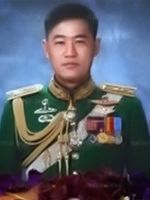
Abb.: Romklao Thuwatham (พันเอกร่มเกล้า ธุวธรรม)
[Bildquelle: th.Wikipedia. -- Public domain]
2010-04-12


In Der Spiegel (15/2010. -- S. 94) berichtet Thilo Franke über "Roter Sturm: Seinem Volk droht der Bürgerkrieg, doch der kranke König schweigt. Von der Frage, wer Bhumibols Nachfolger wird, hängt die Zukunft des Landes ab"
Auf Einzelheiten des Berichts muss hier wegen der thailändischen Zensur verzichtet werden.
2010-04-13/14
Songkran (สงกรานต์): bis zum 19. (Rückfahrt) fordert der Verkehr landesweit 306 Tote und 3502 Verletzte. Hauptursachen der Verkehrsunfälle: Trunkenheit am Steuer und überhöhte Geschwindigkeit. An 75% der Unfälle sind Motorräder beteiligt, an 16% Pick-ups, an 4% Pkw.
Abb.: Songkran (สงกรานต์), Chiang Mai (เชียงใหม่), 2010-04-13
[Bildquelle: Peter Richards. -- http://www.flickr.com/photos/doiboipete/5028798661/. -- Zugriff am 2012-10-30. -- Creative Commons Lizenz (Namensnennung, keine kommerzielle Nutzung, keine Bearbeitung)]
2010-04-14
"Roter Songkran (สงกรานต์)"
Abb.: "Roter Songkran (สงกรานต์)"
[Bildquelle: Ratchaprasong. -- http://www.flickr.com/photos/ratchaprasong/4520145335/. -- Zugriff am 2012-10-17. -- Creative Commons Lizenz (Namensnennung, keine kommerzielle Nutzung)]
"On the overpass I bump into another book vendor of classic leftist books. I have met him many times already at protests and at conferences at a local university. He greets me warmly and asks me how often I come to the protest. “Every day since I got back, ” I answer. “Every day for me too, ” he replies, “for two weeks. ” He is sitting on a motorbike, wearing a green, Mao-like cap with a red star on his forehead, a red shirt, and jeans. In front of him on a plastic table covered with blue cloth are his books. We start talking about the protest and the clearing of the other site. I ask him why they decided to move here. “The owners of these shopping malls are the people behind this government and the aristocracy. They don’t want the army to engage in any fight here. That will damage their property. ”
We look around for a second.
“We are safer here, protected by Louis Vuitton bags, ”
he laughs. This place of exclusion, a material symbol of unequal access to resources, has been transformed into a shelter for the red-shirt movement, precariously protected by a shield of jewels and luxury goods.
“They have no problem in destroying lives but they don’t want to destroy goods, ”
he says out loud. Around us, red-shirt protesters keep buying from the many street vendors: food, beverages, T-shirts, wristbands, clappers, flip-flops, pictures, DVDs.
We start talking about politics and I ask him why the students are not present in this protest. “They are, ” he replies. “Not too many, ” I say. He stops for a second
“Since ’76, students have not been too involved in politics. You know, students now are interested in the good life, in partying. This is not a protest of the students; it is a protest of the people, which is much better. The people now don’t need students to teach them. Earlier, the students thought they knew and understood but in the end they had their own ideas and dreams. Now the people can speak for themselves. This is the main change. ”
I ask him about the yellow shirts.
“What do you think they think? Why do they support what you call a dictatorship? ”
He looks at me and makes me feel as if it was a stupid question.
“TV, the media, they all create an idea. Yellow shirts believe Thaksin is bad and so anything that comes with him is bad. You know, I don’t like Thaksin either, ” he says, lowering his tone, voicing a position that is slowly spreading, “but now it is clear Thaksin was just a tool. This is not about him anymore. I didn’t like him. But he had good policies. ”
He starts telling me about his first born, of his young pregnant wife being able to give birth for only thirty baht, against the fifty thousand baht that a friend of theirs spent in a private hospital. As we talk my eyes fall on the books. I ask him,
“Which books do you sell more? What are people buying? ”
“Fa Diao Kan [ฟ้าเดียวกัน] [Same Sky], another journal called An [อ่าน] [Reading], and the books of Jit Phumisak [จิตร ภูมิศักดิ์, 1930 - 1966]. ”
“Are people reading Marx or Lenin? ”
I ask, pointing to Marx’s beard dominating two covers.
“Some— the people who are interested in political thought. ”
I tell him that I never understood the relationship between red shirts and communist symbolism. The question makes him uncomfortable and he starts to be defensive, maybe as a reaction to years of propaganda equating communists with enemies of the state.
“Red shirts are not communists, ”
he starts out. The Maoist hat on his head seems to disagree.
“There are some former communists, Maoists, who are in red shirts but they understand that both communism and this movement are about democracy first. ”
He seems to lean for a more socialist position, looking at Pridi Banomyong [ปรีดี พนมยงค์, 1900 - 1983] as an example.
“So what next if the government is dissolved? ”
“The red shirts should create a new party and maybe also the yellow shirts should create a new party so as to have a real bipartisan system. ”
We talk for a while about Thai society and the welfare state in Europe. Not everyone in the crowd wants to talk for hours about politics. I say goodbye and walk away."
[Quelle: Sopranzetti, Claudio: Red journeys : inside the Thai red-shirt movement. -- Chiang Mai : Silkworm, 2012. -- 137 S. : Ill. ; 21 cm. -- ISBN 978-616-215-035-7. -- S. 50ff. -- Faire use]
2010-04-15

ABC News (Australien) schließt für 2 Wochen das Büro in Bangkok und lässt den Journalisten Eric Campbell das Land verlassen. Dies, weil ABC in Australien einen kritischen Bericht über Thailand senden will. Aufgrund des Berichts könnte Campbell in Thailand wegen Majestätsbeleidigung verhaftet werden.
Abb.: ®Logo
[Bildquelle: Wikipedia. -- Fair use]
2010-04-16
Die Polizei versucht, vier Anführer der Rothemden (เสื้อแดง) festzunehmen, die sich in einem Hotel aufhalten, unter diesen Nattawut Saikua (ณัฐวุฒิ ใสยเกื้อ, 1975 - ) und der frühere Sänger Arisman Pongruangrong (อริสมันต์ พงศ์เรืองรอง, 1964 - ). Die Menge der anwesenden Demonstranten verhindert, dass die Polizei das Gebäude stürmt. So können die Gesuchten entkommen. Die Rothemden (เสื้อแดง) nehmen als Schutzmaßnahme vier Polizisten als Geiseln. Als Folge strukturiert Premierminister Abhisit Vejjajiva das CRES (Centre for the Resolution of the Emergency Situation; ศูนย์อำนวยการแก้ไขสถานการณ์ฉุกเฉิน) neu. Der Oberbefehlshaber der Armee, Anupong Paochinda (อนุพงษ์ เผ่าจินดา, 1949 - ), ersetzt den bisherigen Direktor Suthep Thaugsuban.
Abb.: Anupong Paochinda (อนุพงษ์ เผ่าจินดา)
[Bildquelle: The Official Site of The Prime Minister of Thailand Photo by พีรพัฒน์ วิมลรังครัตน์. -- http://www.flickr.com/photos/40561337@N07/4012929441/. -- Zugriff am 2012-10-12. -- Creative Commons Lizenz (Namensnennung)]
2010-04-19
Abb.: Fantasievolles Rothemd (เสื้อแดง), 2010-04-19
[Bildquelle: K.rol2007. -- http://www.flickr.com/photos/21086912@N06/4534699723/. -- Zugriff am 2012-10-17. -- Creative Commons Lizenz (Namensnennung)]
2010-04-20
Abb.: Bau von Barrikaden aus Bambusspeeren
[Bildquelle: Andrew Dyson. -- http://www.flickr.com/photos/andrewdyson/4602823211/. -- Zugriff am 2012-10-17. -- Creative Commons Lizenz (Namensnennung)]
2010-04-22
Vier Explosionen von Granaten in Silom (สีลม): 10 Verletzte.
Abb.: Lage von Silom (สีลม)
[Bildquelle: OpenStreetMap. -- Creative Commons Lizenz (Namensnennung, share alike)]
2010-04-26
Jaran Dittapichai [จรัล ดิษฐาภิชัย], einer der Führer der Rothemden (เสื้อแดง), behauptet, dass Astrologen sagten, dass dieser 26. April ein sehr schlechter Tag für Thailand sein wird.
At Ratchaprasong [แยกราชประสงค์] the crowd has grown significantly since the last time I was here. As I move away from the stage I hear from the loudspeakers the word "motorcycle-taxi." I turn around and on stage is a motorcycle- taxi driver, dressed in a vest with the insignia of the Phuea Thai Party [พรรคเพื่อไทย]. He talks to the crowd about the two hundred thousand motorcycle-taxis in this city who support the movement because Thaksin gave them freedom from local mafia. "We will come out to help the red shirts," he assures as the crowd claps. He speaks very briefly." [Quelle: Sopranzetti, Claudio: Red journeys : inside the Thai red-shirt movement. -- Chiang Mai : Silkworm, 2012. -- 137 S. : Ill. ; 21 cm. -- ISBN 978-616-215-035-7. -- S. 69. -- Faire use]
2010-04-26

NZZ: In Thailand rumort es, aber der König schweigt : Über die Monarchie - die am meisten verehrte Institution - wird laut nachgedacht / von Victor Merten.
"Ein europäischer Banker, der Thailand seit Jahren kennt und nicht mit Namen genannt werden will, vermutet auch einen anderen Grund hinter dem Schweigen Bhumibols: «Der König steht nicht einfach über dem Graben, der sich in der thailändischen Gesellschaft aufgetan hat. Das Königshaus ist Teil des Konflikts», sagt er. Thailand erlebe derzeit einen mehrfachen Einschnitt: Die fetten Jahre seien vorbei, kein Aufschwung mehr könne die gesellschaftlichen Gegensätze übertünchen, die Herrschaft Bhumibols stehe vor ihrem Ende. Gerade jetzt werde diskutiert, welche Rolle der König in einem künftigen, demokratischeren Thailand spielen solle. Der König, der Bangkoks Oberschicht nahestehe, die von den Rothemden, den Armen aus dem Norden, bekämpft werde. Sich jetzt einzumischen, wäre gefährlich." [Quelel: NZZ Internationale Ausgabe. -- 2010-04-26. -- S. 3. -- Fair use]
2010-04-28
Premiere des Films Edge of the Empire (คนไททิ้งแผ่นดิน) von Nirattisai Kaljareuk (นิรัตติศัย กัลย์จาฤก)
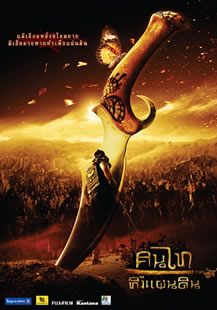
Abb.: Plakat
[Bildquelle: th.Wikipedia. -- Fair use]
|
"Edge of the Empire (คนไททิ้งแผ่นดิน) is a 2010 Thai historical film directed by Nirattisai Kaljareuk (นิรัตติศัย กัลย์จาฤก). Set in southern Mongolia over 1,000 years ago, the story relates the history of the small tribe called Tai, at the time a colony ruled by the Great Han. This film shows how the Tai people, oppressed by their Han overlords, unite to fight for their freedom. Cast
[Quelle: http://en.wikipedia.org/wiki/Edge_of_the_Empire_%28film%29. -- Zugriff am 2013-03-29] |
2010-04-29

Wipas Raksakulthai (วิภาส รักสกุลไทย) wird wegen Majestätsbeleidigung (lèse majesté) auf seiner Facebook-Site verhaftet.
Abb.: ®Logo
[Bildquelle. Wikipedia]
"Wipas Raksakulthai (Thai: วิภาส รักสกุลไทย) is a Thai businessman currently serving a sentence for lèse majesté following a Facebook post to his account perceived to criticize King Bhumibol. Wipas has been named a prisoner of conscience by Amnesty International. Wipas is a Thai "Red Shirt", a supporter of the United Front for Democracy Against Dictatorship (แนวร่วมประชาธิปไตยต่อต้านเผด็จการแห่งชาติ; นปช.), the movement loosely affiliated with deposed prime minister Thaksin Shinawatra. On 29 April 2010, he was arrested at his home in Rayong Province (ระยอง) by the Department of Special Investigation on charges of lèse majesté, following a Facebook post to his account allegedly criticizing the king. He was 37 years old at the time of his arrest. Wipas denied that he had made the post, stating that his account had been hacked. In May 2011, The Nation quoted a "reliable source" as saying that Wipas had been released on bail, but was trying to avoid further news coverage.
The Bangkok Post reported that this was thought to be the first lèse majesté charge against a Thai Facebook user. A media reform activist described the case as escalating "the climate of fear among [Thai] internet users" and stated that "now many people refrain from revealing their real identities on Facebook."
In its 2011 Annual Report, Amnesty International criticized the arrest, expressing its concern that "[Thai] freedom of expression is being curbed through the use of the emergency decree, the lese majeste law and the Computer Crime Act." The organization named Wipas a prisoner of conscience, apparently the first in several decades. An advisor to Amnesty International said he was uncertain why Wipas had been classified as a prisoner conscience while the possibly hundreds of other citizens detained under the lese majeste law had not."
[Quelle: http://en.wikipedia.org/wiki/Wipas_Raksakulthai. -- Zugriff am 2012-01-13]
2010-04-29
Premiere des Films The Intruder (เขี้ยวอาฆาต) von Thanadol Nualsuth (ธนดล นวลสุทธิ์) und Thammanoon Sakulboonthanom (ธรรมนูญ สกุลบูรณ์ถนอม). Einspielergebnis: $121.000.
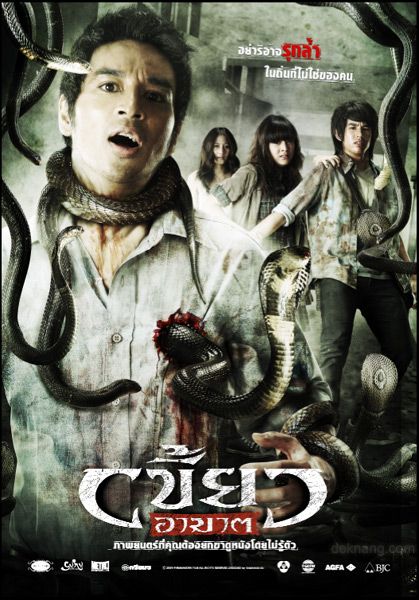
Abb.: Plakat
[Bildquelle: Wikipedia. -- Fair use]
|
"The Intruder (Thai: เขี้ยวอาฆาต; Kew ar-khard) is a 2010 Thai horror film directed by Thanadol Nualsuth (ธนดล นวลสุทธิ์) and Thammanoon Sakulboonthanom (ธรรมนูญ สกุลบูรณ์ถนอม). Based on a story by filmmaker Poj Arnon (พจน์ อานนท์), the plot involves an apartment complex in Thailand being overrun by vicious cobras. The Intruder was the second highest grossing film in Thailand in its opening week being only beaten by Iron Man 2. It received its North American premiere at the Festival du Nouveau Cinéma. Plot summaryIn an old house next to an apartment complex in Thailand, a man is bitten to death by a snake. The special services and the media congregate but are only able to find a few snakes. Later, a group of cobras invade the building which threatens the lives of the habitants: a young landlady Panin (แพง) (Kwankao Savetawimon - ขวัญข้าว เศวตวิมล, 1982 - ), her aunt Pai (ป้าแดง) (Wasana Chalakorn - วาสนา ชลากร) who has set up a snake shrine, Panin's doctor ex-boyfriend Sadayu (กอฟ) (Akara Amarttayakul - อครา อมาตยกุล, 1974 - ), his younger brother Vick (อั๋น) (Peerawish Bunnag - พีรวิชญ์ บุนนาค, 1992 - ), snake specialist Chai (Thanatorn Oudsahakul), airline stewardess Jan (เชอรี่) (Chawwadee Chernok - ชาวดี เชอร์ม็อค), three rock musicians, three teenagers, plus two-timing husband Ponnapa (แอน) (Aungkana Timdee - อังคนา ทิมดี), his wife Mon (เต๋า) (Sarocha Watittapan - สโรชา วาทิตตพันธ์, 1978 - ) and their young daughter Kij (เต้) (Sukol Pongsathat - ศุกล พงษ์ทัต). Along with them is a TV reporter Paai (สายป่าน) (Apinya Sakuljaroensuk - อภิญญา สกุลเจริญสุข, 1990 - ) who is secretly sending out clips of the gory events through her mobile phone. ReleaseThe Intruder premiered in Thailand on April 29, 2010.[1] On its first week, the film was the second highest grossing film in Thailand, only being beaten by Iron Man 2.[2] The film grossed a total of $120,630 in Thailand.[3] The film received its North American premiere at the Festival du Nouveau Cinéma on October 19, 2010.[4] The Intruder was shown in the Seattle International Film Festival on June 4, 2011.[5] ReviewsVariety gave a generally favorable review of The Intruders praising the energetic performance of the cast, as well as noting that the "effects are decent for this type of fare."[6] Film Business Asia gave the film a six out of ten rating, referring to the film as "good, trashy fun".[1]" [Quelle: http://en.wikipedia.org/wiki/The_Intruder_%282010_film%29. -- Zugriff am 2013--03-29] |
2010-05-01 - 2010-10-31
Expo 2010 in Shanghai ( 上海, China).
Abb.: Lage von Shanghai ( 上海)
[Bildquelle: CIA. -- Public domain]
Abb.: Thai-Pavillon an der Expo 2010
[Bildquelle: Motohiko Tokuriki. -- http://www.flickr.com/photos/59722994@N00/4597673777. -- Zugriff am 2011-12-30. -- Creative Commons Lizenz (Namensnennung)]
2010-05-03
Ministerpräsident Abhisit bietet einen Fünf-Punkte-Plan Neuwahlen am 14. November an. Bedingung ist die sofortige Auflösung der Besetzung. Dieser Termin ist den Demonstranten zu spät, darum lehnen sie ab.
2010-05-03

DER SPIEGEL: Melonen in Uniform : Die Unruhen in Bangkok offenbaren ein gefährliches Machtvakuum: Der König hält sich raus. Und das Putscherfahrene Militär weiß nicht weiter, die Armee laviert.
"Kurz hinter dem Don-Mueang-Flughafen, auf einer jener Schnellstraßen, die aus Bangkok herausführen, schnappt die Falle der Polizei zu. Bewehrt mit Schilden, schusssicheren Westen und Stahlhelmen, riegeln einige Hundertschaften die Ausfallstraße ab. Aus der Stadt rücken unaufhörlich Rothemden nach, auf Motorrädern, Pick-ups und Lastwagen. Eingeklemmt dazwischen stecken Hunderte Autofahrer fest. Wenig später fallen Schüsse: Gummigeschosse und wohl auch scharfe Munition. Von der anderen Seite fliegen Flaschen und Steine, Feuerwerksraketen sirren durch die Luft, von Zwillen abgeschossene Murmeln peitschen gegen die Polizeischilde. Im Drama von Bangkok ist kein Ende abzusehen.
Die Armee hat mittlerweile das Sagen, es herrscht Ausnahmezustand. Sie hat sogar die Taktik der Regierungsgegner übernommen, sie schickt ihre Soldaten nun ebenfalls auf Motorrädern durch die Verkehrsstaus der Stadt. Doch Straßenkampf ist keine militärische Disziplin, und die Armeeführung wirkt kopflos. Eine Kolonne mobiler Soldaten wird am Mittwoch der vergangenen Woche direkt in das Knäuel der Aufständischen geleitet.
Die Ersten werden von den Regierungsgegnern noch höflich durchgewinkt. Doch dann schlägt die Stimmung um: Zwei im Gewühl steckengebliebenen Nachzüglern werden die Helme vom Kopf gerissen, Schläge prasseln auf die Unglücklichen ein.
Den Motorradsoldaten gelingt schließlich die Flucht, sie versuchen, sich den Kameraden weiter vorn anzuschließen. Die aber halten sie für Angreifer, geraten in Panik und eröffnen das Feuer - mindestens ein Soldat stirbt. Es war der 27. Tote, den der Kampf um die Macht in Thailand in den vergangenen drei Wochen gefordert hat."
[Quelle: Der Spiegel. -- 18/2010. -- S. 106. -- Fair use]
2010-05-05
Die obersten Generäle der Streitkräfte:
Abb.: Royal Thai Navy Chief Admiral Kamthorn Phumhiran (พลเรือเอกกำธร พุ่มหิรัญ), Royal Thai Army Chief General Anupong Paojinda (พลเอกอนุพงษ์ เผ่าจินดา) and Royal Thai Armed Forces Supreme Commander General Songkitti Chakkrabat (พลเอกทรงกิตติ จักกาบาตร์), 2010-05-05 19:34
[Bildquelle: The Official Site of The Prime Minister of Thailand Photo by พีรพัฒน์ วิมลรังครัตน์. -- http://www.flickr.com/photos/40561337@N07/4584451753/. -- Zugriff am 2011-12-02. -- Creative Commons Lizenz (Namensnennung)]
2010-05-05
Premiere des Films Ong-Bak 3 (องค์บาก 3) von Tony Jaa (จา พนม, 1976 - ) und Panna Rittikrai (พันนา ฤทธิไกร, 1961 - )
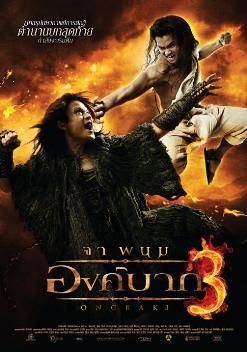
Abb.: Plakat
[Bildquelle: Wikipedia. -- Fair use]
|
"Ong-bak 3 (Thai: องค์บาก 3) ist ein thailändischer Martial-Arts-Film aus dem Jahr 2010. Regie führten Tony Jaa (จา พนม, 1976 - ) und Phanna Rithikrai (พันนา ฤทธิไกร, 1961 - ). Der deutsche DVD und Blu-ray Disc Erscheinungstermin war am 26. November 2010.[1] Die Inszenierung knüpft inhaltlich an den Vorgänger Ong-bak 2 (องค์บาก 2) aus dem Jahr 2008 an und erzählt die Geschichte vom Kämpfer Tien (เทียน), der sich auf einem Rachefeldzug befindet. HandlungNachdem Tien (เทียน) überwältigt und fast zu Tode gefoltert wurde, rettete man ihn und bringt ihn zu den Mönchen des Klosters Kana Khone. Dort erholte er sich von seinen Verletzungen und lernte durch Meditation, mit seinem Karma umzugehen. Als er von Kriegern an seinem Meditationsort angegriffen wird und sie besiegt, stellt er fest, dass im Dorf alles zerstört ist und niemand mehr dort lebte. Er äußerte nun gegenüber Meister Bua (พระบัว) seine Bereitschaft zu handeln. Danach ging er zu seinem Feind "Krähe", der alle Dorfbewohner zu seinen Sklaven gemacht hatte. Die "Krähe" ließ Tiens Freundin Pim (พิม) foltern, zu sich bringen und schnitt ihr die Kehle durch. Tien tötete daraufhin alle Wachen und wurde selbst von der Krähe getötet. Doch alle diese Gegebenheiten spielten sich nur in Tiens Phantasie ab. Er hatte sich alles nur vorgestellt, was wohl geschehen wäre, wenn er so gehandelt hätte. Wieder in der Echtzeit fordert ihn die Krähe zum finalen Kampf heraus. Tien siegt und am Ende heiraten Tien und Pim. Besetzung
Jens Niedzielski kritisiert in der Filmzeitschrift Splatting Image
die religiösen Schilderungen und die spirituellen Einflüsse der
Produktion. „Nach den ersten dreißig Minuten ist man drauf und dran,
ONG BAK 3 abzuschreiben …“ Ferner bezeichnet er das Drehbuch als
„quälend“ und
„sinnlos“ und bilanziert, das Werk sei
„kein
technisch runder Film“. Wie schon beim abrupt endenden Vorgänger Ong-bak 2, kam es auch bei dieser Produktion zu Komplikationen. Durch Verzögerungen wurde die Premiere des Streifens immer wieder verschoben, die letztendlich am 5. Mai 2010 in Bangkok stattfand." [Quelle: http://de.wikipedia.org/wiki/Ong-Bak_3. -- Zugriff am 2013-03-29] |
2010-05-07
Mehrere Tote bei Kämpfen zwischen Regierungstruppen und Demonstranten.
2010-05-10
"A mixture of tension, fear, excitement, and boredom has been conquering the protesters over the past few days. Day after day, predictable discourses and sleepless nights set the rhythm of the protest and the daily lives of many who participate alongside their normal schedules. At sunrise many leave the protest only to return in the evening. Behind these fluctuations and daily diasporas stand a multitude of stories, lives, and motivations. Regional migrants leave the protest in the morning to service the city that is slowly eating their lives. Some go back to their hometowns to visit relatives, taking advantage of the free buses connecting the city and the villages. Small businesses take advantage of the protesters’ presence in the city to support their families, beyond any issue of political convictions. Curiosity about the wonders of the metropolis takes protesters out of the protest area at times. Some come back because of political ideals, democracy, equality; some come back to get a free bowl of food; some want for once to be part of history, to touch it, to make it; some seize the chance to take the girl from the shop next door to somewhere different on a date; some others "go home," as they put it, to experience the nostalgia of their lives in the village, either by truly going to their village, or just to its encampment in the middle of the bustling metropolis." [Quelle: Sopranzetti, Claudio: Red journeys : inside the Thai red-shirt movement. -- Chiang Mai : Silkworm, 2012. -- 137 S. : Ill. ; 21 cm. -- ISBN 978-616-215-035-7. -- S. 85. -- Faire use]
"A young man dressed in black speaks about the imminent violence. "We are ready to fight," he tells all of us with serious eyes "We are organized and we have no fear of dying."
As he says this, another guy of the same age arrives with some cans of beer hidden in small plastic bags. "Drink," he tells me, "but keep it in the bag. The guards don’t want us to get drunk." Adun looks at him with a mixture of respect and derision. "I have known him since he was a kid," he tells me with half a smile. I leave them and walk away to sit with the older crowd. I have seen two of the women before, but the older men look unfamiliar. I ask. "We just arrived yesterday," they say sitting cross-legged and shouting over the noise from the speakers on stage.
"Somebody came around to the village and told us that they needed people at the protest and our tent was getting emptier. So we decided to come to Bangkok. They organized a car from the village and brought us here."
"Did you also get some money?" I ask.
"No, no money but we had a free ride and here we don’t have to pay for food or sleeping."
"I have been back and forth three times already," an older woman in a sarong tells me. "The first time at Phan Fa Bridge [สะพานผ่านฟ้าลีลาศ] and the other two here. I stay for some time and then go back when I miss home or I get bored. There is not much to do here.""
[Quelle: Sopranzetti, Claudio: Red journeys : inside the Thai red-shirt movement. -- Chiang Mai : Silkworm, 2012. -- 137 S. : Ill. ; 21 cm. -- ISBN 978-616-215-035-7. -- S. 87. -- Faire use]
2010-05-10

Benigno Aquino III (1960 - ) wird zum Präsidenten der Philippinen gewählt.
Abb.: Philippinen
[Bildquelle: CIA. -- Public domain]
Abb.: Benigno Aquino III (rechts), 2011-05-14
[Bildquelle: U.S. Navy photo by Mass Communication Specialist 2nd Class James R. Evans. -- http://www.flickr.com/photos/us7thfleet/5770112795/. -- Zugriff am 2012-01-18. -- Creative Commons Lizenz (Namensnennung, keine kommerzielle Nutzung, keine Bearbeitung)]
2010-05-12
Abb.: Mönche als Demonstranten, Bangkok, 2010-05-12
[Bildquelle: Ratchaprasong. -- http://www.flickr.com/photos/ratchaprasong/4601197821/. -- Zugriff am 2012-10-17. -- Creative Commons Lizenz (Namensnennung, keine kommerzielle Nutzung)]
2010-05-13
Das CRES (Centre for the Resolution of the Emergency Situation; ศูนย์อำนวยการแก้ไขสถานการณ์ฉุกเฉิน) verändert die Einsatzregeln ihrer Truppen. Die neuen Richtlinien erlaubten den Einsatz von scharfer Munition für Warnschüsse, zur Selbstverteidigung und zur Tötung nicht näher definierter „Terroristen“. Nach Ansicht von Human Rights Watch schafft die Regierung No-go-Areas zwischen dem Militär und den Demonstranten. Scharfschützen dürfen auf jeden schießen, der sich dort aufhält.
Khattiya Sawasdipol (ขัตติยะ สวัสดิผล, geb. 1951), ein Anführer der Rothemden (เสื้อแดง), wird während eines Interviews mit ausländischen Pressevertretern gezielt erschossen. Er stirbt am 17. Mai an seinen Kopfverletzungen.
Abb.: Um mobil zu sein, benutzen Soldaten Zivil-Motorräder, 2010-05-13
[Bildquelle. Takeaway / Wikimedia. -- GNU FDLicense]
2015-05-14
Die Regierung blockiert Spring News TV (สปริงนิวส์). Der populäre Sender ist bekannt für faire Berichterstattung.
Abb.: ®Logo
2010-05-15
Ab heute versucht das Militär, die Wasser- und Nahrungsversorgung des besetzten Viertels zu blockieren, was aber nur teilweise gelingt. Das CRES sperrt 106 Bankverbindungen von führenden Mitgliedern der UDD (แนวร่วมประชาธิปไตยต่อต้านเผด็จการแห่งชาติ), früheren Funktionären der Thai Rak Thai (พรรคไทยรักไทย), Khattiya Sawasdipol (ขัตติยะ สวัสดิผล, geb. 1951) und der Familie von Thaksin Shinawatra (ทักษิณ ชินวัตร, 1949 - ).
In weiteren schweren Zusammenstößen und bürgerkriegsartigen Szenen feuern Scharfschützen gezielt auf Demonstranten, die die Regierung nur mehr als Terroristen bezeichnet. Die Demonstranten zünden Barrikaden aus Autoreifen an und erwidern das Feuer mit scharfen und teilweise improvisierten Waffen.
Abb.: Rothemden (เสื้อแดง) hinter Barrikade, 2010-05-15
[Bildquelle: Takeaway / Wikipedia. -- GNU FDLicense]
Abb.: Mit Schusswunde Verletzter, 2010-05-15
[Bildquelle: Takeaway / Wikimedia. -- GNU FDLicense]
2010-05-16
Die Polizei verhängt eine Ausgangssperre über einzelne Teile von Bangkok.
Die Regierung setzt den Rothemden (เสื้อแดง) ein weiteres Ultimatum bis Nachmittag, nachdem diese am Vortag ein Angebot für beiderseitigen Abzug ablehnt hatten.
Abb.: Rauch von brennenden Autoreifen-Barrikaden, 2010-05-16
[Bildquelle: Takeaway / Wikipedia. -- GNU FDLicense]
Abb.: Kundgebung von Mönchen, Bangkok, 2010-05-16, 16:00 bis 18:30
[Bildquelle: Ratchaprasong. -- http://www.flickr.com/photos/ratchaprasong/4611869529/. -- Zugriff am 2012-10-17. -- Creative Commons Lizenz (Namensnennung, keine kommerzielle Nutzung)]
Abb.: Mönch bei den Rothemden (เสื้อแดง), Bangkok, 2010-05-16, 16:00 bis 18:30
[Bildquelle: Ratchaprasong. -- http://www.flickr.com/photos/ratchaprasong/4611844735/. -- Zugriff am 2012-10-17. -- Creative Commons Lizenz (Namensnennung, keine kommerzielle Nutzung)]
2010-05-16

Der Schauspieler Pongpat Wachirabanchong (พงษ์พัฒน์ วชิร
บรรจง, 1961 - ) erhält den Nataraja Award (รางวัลนาฏราช) für seine Rolle als รับบท อารักษ์ in der TV-Soap-Opera (ละครโทรทัศน์) พระจันทร์สีรุ้ง ("Rainbow Moon", 2009). Seine Dankesrede:
"This is an award I received for playing a father role. I would like to seek your permission now to talk about our father (the King of Thailand) briefly. A father is a pillar to a house (which he meant "Thailand"). My house is very big. We have many people living together. Since I was born, this house was very beautiful and homely. For it to be like this, the ancestors of our father lost sweat and blood and sacrificed their lives to be able to build this house. Up to this point, this father is still working tirelessly to look after this house and to care for the happiness of anyone under this roof. If someone is angry at another, whoever, and then passed that anger down to our father, hate our father, insult our father, and have thoughts about chasing our father out of this house, I would have to walk up to that person and say, if you hate our father, and do not love our father anymore, you should leave, because this is our father's house, because this is our father's kingdom. I love our King. I believe that everyone here loves our King too. We are the same colour. This crown on my head I bestow for the King. Thank you." [Übersetzung: Pavin Chachavalpongpun [ปวิน ชัชวาลพงศ์พันธ์]. -- In: "Good coup" gone bad : Thailand's political developments since Thaksin's downfall / ed by Pavin Chachavalpongpun [ปวิน ชัชวาลพงศ์พันธ์]. -- Singapore : Institute of Southeast Asian Studies, 2014. -- 290 S. ; 23 cm. -- ISBN 9789814459600. -- Konferenzband zu: Five years after the military coup : Thailand's political developments since Thaksin's downfall. -- Singapore 2011-09-19. -- S. 7]
Künstlerlink auf Spotify:
URI: spotify:artist:5qCKlEK4IbSxCaIx5AvmIT
URL: https://open.spotify.com/artist/5qCKlEK4IbSxCaIx5AvmIT
Abb.: Pongpat Wachirabanchong (พงษ์พัฒน์ วชิรบรรจง), 2007
[Bildquelle: Wisekwai / Wikimedia. -- GNU FDLizenz]
"Pongpat Wachirabunjong (Thai: พงษ์พัฒน์ วชิรบรรจง; RTGS: Phongphat Wachirabanchong) is a Thai singer, actor and film director. He is well known in Thailand for his role in the action films Heaven's Seven (7 ประจัญบาน) and Seven Street Fighters (7 ประจัญบาน 2 ), as the red-shorts-clad Sergeant Dab Jampoh (จ่าดับ จำเปาะ).
In addition to his film roles, he has acted in many lakorns (ละครโทรทัศน์, Thai soap operas), and is a popular singer.
Pongpat made his debut as a director in 2007 with the critically acclaimed drama film, Me ... Myself (ขอให้รักจงเจริญ).
[...]
MusicPongpat released several albums during the late 1980s and early 1990s with the now-defunct label Kita Records. His first album was pop rock, while his later records were more rock-oriented. Some of his better-known songs include Tua Samrong (ตัวสำรอง), Ik Nan (อีกนาน), Fun Fuen (ฟั่นเฟือน), Chai Naklaeng (ใจนักเลง), and Mai Ru Ni Wa (ไม่รู้นี่หว่า).
After a long time away from the music scene, on 22 January 2007, he rejoined fellow artists from the same label for a concert called the "Kita Back To The Future Concert".[1]"
[Quelle: http://en.wikipedia.org/wiki/Pongpat_Wachirabunjong. -- Zugriff am 2015-01-15]
2010-05-17
Khattiya Sawasdipol (ขัตติยะ สวัสดิผล, geb. 1951) stirbt aufgrund der gezielten Schüsse in seinen Kopf vor vier Tagen (2010-05-13).
Abb.: Gedenkstätte für Khattiya Sawasdipol (ขัตติยะ สวัสดิผล), 2010-05-22
[Bildquelle: Takeaway / Wikipedia. -- GNU FDLicense]
"Khattiya Sawasdipol, (Thai: ขัตติยะ สวัสดิผล; * 2. Juni 1951 im Landkreis (Amphoe) Photharam (โพธาราม)); † 17. Mai 2010 in Bangkok) war ein thailändischer Militär, Politiker und Schriftsteller. Bekannter war der Generalmajor der thailändischen Armee unter seinem Pseudonym Seh Daeng (Thai: เสธ แดง), auf Deutsch „Roter Kommandeur“. In den 1970er Jahren erlangte er im Kampf gegen die kommunistische Guerilla im Nordosten des Königreichs einen besonderen Ruf.[1]
Putsch 2006Khattiya Sawasdipol stand dem 2006 abgesetzten Premierminister Thaksin Shinawatra (ทักษิณ ชินวัตร, 1949 - ) nahe[2] und war ein Gegner des Militärputsches vom 19. September 2006.
Rolle bei den Rothemden (เสื้อแดง)Am 14. Januar 2010 ordnete Anupong Paochinda (อนุพงษ์ เผ่าจินดา, 1949 - ), der Generalstabschef der thailändischen Armee, die Suspendierung von Generalmajor Khattiya Sawasdipol an, da er zur UDD (United Front of Democracy Against Dictatorship - แนวร่วมประชาธิปไตยต่อต้านเผด็จการแห่งชาติ) übergelaufen sei. Schon davor war der General am 18. Oktober 2008 von Anupong Paochinda von seinem Posten in der ISOC (Internal Security Operations Command - กองอำนวยการรักษาความมั่นคงภายใน) abgesetzt worden. Er solle stattdessen Aerobic-Kurse geben. Dazu bemerkte Khattiya Sawasdipol, er habe einen Tanz vorbereitet, den „Werfen-von-Handgranaten-Tanz“.[3] Nach der Suspendierung des Generals wurde das Büro des Generalstabschefs mit einem M79-Granatwerfer beschossen, ohne außer der Verletzung eines Soldaten wesentlichen Schaden anzurichten. [4]
Abb.: M79-Granatwerfer
[Bildquelle: US Army / Wikipedia. -- Public domain]Khattiya Sawasdipol war Führungsmitglied der United Front of Democracy Against Dictatorship (Thai: แนวร่วมประชาธิปไตยต่อต้านเผด็จการแห่งชาติ, kurz „UDD“, auf Deutsch „Vereinigte Front für Demokratie gegen Diktatur“), einer Gruppierung, die sich nach dem Militärputsch gebildet hatte und auch „Rothemden (เสื้อแดง)“ (เสื้อสีแดง) genannt wird. Hier hatte er den Bau der Barrikaden in Bangkok bei den Unruhen im Mai 2010 organisiert.[5] Die thailändische Regierung unter Abhisit Vejjajiva (อภิสิทธิ์ เวชชาชีวะ, 1964 - ) bezeichnete ihn mehrmals als Terroristen, da er zu bewaffneten Aktionen gegen das Militär aufgerufen hatte.[6]
Es wird vermutet, dass er der Ausbilder der „Männer in Schwarz“ war, die während der Unruhen in Bangkok 2010 mehrmals die Armee angriffen und auch für kleinere Anschläge auf Strommasten verantwortlich gemacht werden.[1]
TodAm 13. Mai 2010 wurde auf Sawasdipol während eines Interviews mit ausländischen Pressevertretern geschossen. Er wurde von einem Projektil vom Typ .308 Winchester[7] am Kopf getroffen. Seine letzten Worte vor dem Schuss waren: „Die Armee kann nicht in unser Gebiet eindringen.“[1][8] Er starb vier Tage später an den Folgen dieser Verletzung.[9][1]
Abb.: Projektile vom Typ .308 Winchester
[Bildquelle: The Epopt / Wikipedia. -- Public domain]Am 15. Mai betonte Sansern Kaewkamnerd vom Centre for the Resolution of the Emergency Situation (kurz CRES; ศูนย์อำนวยการแก้ไขสถานการณ์ฉุกเฉิน, ein von der Regierung eingesetztes Gremium zur friedlichen Lösung des Konfliktes), dass das CRES kein Attentat auf Khattiya Sawasdipol in Auftrag gegeben habe. Außerdem wurde ein Team des Central Institutes of Forensic Science unter der Leitung von Khunying Porntip Rojanasunan angewiesen, den Tatort sofort nach dem Ende der Proteste zu untersuchen.[7]
Am 19. Mai gab das Königshaus bekannt, dass es die Begräbniskosten übernehmen wolle. Weitere Erklärungen folgten nicht.[10]
Nach den Unruhen wurde ein Aktivist der Rothemden (เสื้อแดง), Jatuporn Prompan (จตุพร พรหมพันธุ์, 1965 - ), unter anderem von Suthep Thaugsuban (สุเทพ เทือกสุบรรณ, 1949 - ), der Verschwörung zum Mord an Khattiya Sawasdipol beschuldigt und wegen Terrorverdachts inhaftiert.[11]
Nachdem die Untersuchungen zwischenzeitlich eingestellt wurden, verfügte Innenminister Chalerm Yubamrung (เฉลิม อยู่บำรุง, 1947 - ) am 13. Januar 2012 eine Wiederaufnahme der Untersuchung zum Attentat auf Khattiya Sawasdipol.[12]"
[Quelle: http://de.wikipedia.org/wiki/Khattiya_Sawasdipol. -- Zugriff am 2012-06-18]
2010-05-17

Die direkt neben dem besetzten Gebiet gelegene deutsche Botschaft muss den Betrieb vollkommen einstellen.
Abb.: Lage der Deutschen Botschaft
[Bildquelle: OpenStreetMap. -- Creative Commons Lizenz (Namensnennung, share alike)]
2010-05-18
Die Regierung lehnt eine Initiative des Senats zur Vermittlung im Konflikt mit den Rothemden (เสื้อแดง) ab. Vor der Aufnahme von Gesprächen müsse das Widerstandscamp der Protestierenden aufgelöst werden. Ministerpräsident Abhisit: "Die Situation wird nur dann beendet, wenn der Protest aufhört."
2010-05-19
Um fünf Uhr morgens stürmt das Militär mit gepanzerten Fahrzeugen das durch Rothemden (เสื้อแดง) besetzte Viertel, worauf mehrere Führer der Rothemden (เสื้อแดง) ihre vorläufige Kapitulation erklären.
Um weitere Tote zu vermeiden, rufen Jatuporn Prompan (จตุพร พรหมพันธุ์, 1965 - ), Weng Tojirakarn (เหวง โตจิราการ, 1951 - ) und Nattawut Saikua (ณัฐวุฒิ ใสยเกื้อ, 1975 - ) ihre Anhänger zum Ende der Proteste auf. Andere UDD-Anführer rufen ihre Anhänger im Falle einer Erstürmung des Gebiets zu einer koordinierten Brandstiftungs- und Plünderungskampagne auf.
"Rothemden (เสื้อแดง)" setzen das Shopping Center CentralWorld (เซ็นทรัลเวิลด์) in Brand. der Zen Departement Store wird schwer beschädigt. In den Trümmern findet die Feuerwehr zehn Leichen. (Im September 2010 wird ein großer Teil von CentralWorld wieder eröffnet, im Januar 2012 auch "Zen".)
Abb.: Lage von CentralWorld (เซ็นทรัลเวิลด์)
[Bildquelle: OpenStreetMap. -- Creative Commons Lizenz (Namensnennung, share alike)]
Abb.: Armee-Fahrer eines Type-85 AFV (Armoured Fighting Vehicle) wartet auf seinen Einsatz, 2010-05-19, 10:00
[Bildquelle: null0. -- http://www.flickr.com/photos/null0/4684579817/. -- Zugriff am 2012-10-17. -- Creative Commons Lizenz (Namensnennung)]
Abb.: Type-85 AFV (Armoured Fighting Vehicle) bereit zum Einsatz gegen Barrikade der Rothemden (เสื้อแดง), 2010-05-19
[Bildquelle: null0. -- http://www.flickr.com/photos/null0/4685036130/. -- Zugriff am 2012-10-17. -- Creative Commons Lizenz (Namensnennung)]
Abb.: CentralWorld (เซ็นทรัลเวิลด์) in Flammen, 2010-05-19
[Bildquelle: Ratchaprasong. -- http://www.flickr.com/photos/ratchaprasong/4626263307/. -- Zugriff am 2012-10-17. -- Creative Commons Lizenz (Namensnennung, keine kommerzielle Nutzung)]
Abb.: CentralWorld (เซ็นทรัลเวิลด์) am 2010-05-20
[Bildquelle: jayarc. -- http://www.flickr.com/photos/7827294@N04/4624266615. -- Zugriff am 2012-10-16. -- Creative Commons Lizenz (Namensnennung)]
Abb.: CentralWorld (เซ็นทรัลเวิลด์), 2008
[Bildquelle: Tee Meng / Wikipedia. -- Public domain]Auch im Gebäude des Fernsehsenders Channel 3, in der Börse und in verschiedenen Bankfilialen wird Feuer gelegt. Insgesamt gibt es 36 Brandherde in der Stadt.
Heckenschützen feuern vom Skytrain auf Demonstranten.
Tausende UDD-Anhänger flüchten ins Wat Pathum Wanaram (วัดปทุมวนาราม), da dieser Tempel durch eine Vereinbarung mit der Regierung als Schutzzone gilt. Laut einer Untersuchung von forensischen Beweisen und Augenzeugenberichten durch Human Rights Watch eröffnen Scharfschützen das Feuer auf die Flüchtlinge im Tempel, töten sechs Personen und verletzen viele.
Abb.: Lage von Wat Pathum Wanaram (วัดปทุมวนาราม)
[Bildquelle: OpenStreetMap. -- Creative Commons Lizenz (Namensnennung, share alike)]Auch in den Provinzen Khon Kaen (ขอนแก่น), Ubon Ratchathani (อุบลราชธานี), Udon Thani (อุดรธานี) und Mukdahan (มุกดาหาร) wird gekämpft.
Abb.: Lage der Provinzen Khon Kaen (ขอนแก่น), Ubon Ratchathani (อุบลราชธานี), Udon Thani (อุดรธานี) und Mukdahan (มุกดาหาร)
[Bildquelle: OpenStreetMap. -- Creative Commons Lizenz (Namensnennung, share alike)]In 24 Provinzen herrschen Kriegsrecht und Ausgangssperre.
Abb.: Provinzen unter Kriegsrecht und Ausgangssperre
[Bildquelle: Prachatai. -- http://www.flickr.com/photos/prachatai/4621861735/in/photostream. -- Zugriff am 2013-02-11. -- Creative Commons Lizenz (Namensnennung, keine kommerzielle Nutzung, keine Bearbeitung]Beim Kampf gegen das eigene Volk haben die Soldaten 117.923 Gewehrgeschoße verbraucht, darunter sind 2500 Scharfschützengeschoße

Aufschrift auf einem Plakat auf einer Straßenüberführung in Bangkok (in Thai): "Wo ist der Vater?"
"After six days of heavy fighting around the original protest area, the military this morning launched the final dispersal of the red shirts. I turn on the TV and see tanks moving onto the barricades and pushing them down. The face of the government spokesman, Panitan Wattanayakorn [ปณิธาน วัฒนายากร, 1960 - ], appears on every channel, assuring the population that this is being done for their own safety and that the situation is under control. I look out of the window. A big smoke column coils into the sky in the direction of Rama IV Road [ถนนพระรามที่ 4]. The situation hardly seems under control. It is not the usual black smoke from tires but a bigger gray cloud. I wait for the sound of shots to slacken then ride my bike to Ngam Duphli [ซอยงามดูพลี]. The street has just been destroyed. Buildings along Rama IV are burning: bank branches, convenience stores, and some ATM machines. A few people I have never seen before are walking around, taking pictures and helping to put out small fires. The street is covered in filth, food everywhere fermenting in the hot sun. A small crowd hidden behind a wall stares at a tall building overlooking the soi [ซอย], trying to spot snipers. The entrance to the soi is completely open, no tires left. The building at the corner of Rama IV Road, an office of Kasikorn Bank [ธนาคารกสิกรไทย], has been completely burned, leaving an empty blackened shell with electric wires swinging from the pole on the street. The building is dripping with water used to put out the fire. In front of this burned skeleton of a building sit two men, one a local resident, the other a Thai journalist. They casually discuss what is going on around the city, in a mixture of excitement and disbelief. I talk to them for a while and then walk with the Thai journalist down to Rama IV. Turning out of Ngam Duphli, we pass a barricade of tires stretching across Rama IV Road, and walk into a destroyed area, burned buildings and phone booths, smashed ATMs, and a thick layer of burned rubber everywhere. The pavement is sticky, the air is dense. People are taking pictures, walking in stunned silence. Bank branches and 7-Elevens [เซเว่น อีเลฟเว่น] have been burned with surgical precision, somehow managing to keep the adjacent buildings undamaged." [Quelle: Sopranzetti, Claudio: Red journeys : inside the Thai red-shirt movement. -- Chiang Mai : Silkworm, 2012. -- 137 S. : Ill. ; 21 cm. -- ISBN 978-616-215-035-7. -- S. 122. -- Faire use]
"Two other policemen are collecting red paraphernalia. They see my camera and ask me to take a picture of them holding a red-shirt bandana with the words, "Truth Today." They tell me, "We are completely red shirts. The police officers are red shirts. Please report the real news. Please help us."
[Quelle: Sopranzetti, Claudio: Red journeys : inside the Thai red-shirt movement. -- Chiang Mai : Silkworm, 2012. -- 137 S. : Ill. ; 21 cm. -- ISBN 978-616-215-035-7. -- S. 127. -- Faire use]
2010-05-20
Die Situation beruhigt sich weitgehend. Die nächtliche Ausgangssperre bleibt in Kraft.
Abb.: Am Morgen danach, 2010-05-20, frühmorgens
[Bildquelle: Ratchaprasong. -- http://www.flickr.com/photos/ratchaprasong/4640916914/. -- Zugriff am 2012-10-17. -- Creative Commons Lizenz (Namensnennung, keine kommerzielle Nutzung)]
2010-05-20 ff.
Ab jetzt gilt das Motto: "Jeder ist sein eigner Anführer" (ทุกคนที่เป็นผู้นำของตัวเอง). Zahllose kleine Protestaktionen in Zentralthailand.

Die Monarchie wird von immer mehr Personen der Unterschicht in Frage gestellt.
2010-05-21
Abb.: Es ist vollbracht, 2010-05-21
[Bildquelle: Ratchaprasong. -- http://www.flickr.com/photos/ratchaprasong/4640887902/. -- Zugriff am 2012-10-17. -- Creative Commons Lizenz (Namensnennung, keine kommerzielle Nutzung)]
2010-05-21

In Cannes (Frankreich) Premiere des Films "Uncle Boonmee Who Can Recall His Past Lives" (ลุงบุญมีระลึกชาติ).
Abb.: Lage von Cannes (Frankreich)
[Bildquelle: OpenStreetMap. -- Creative Commons Lizenz (Namensnennung, share alike)]
Abb.: Plakat
[Bildquelle: th.Wikipedia. -- Fair use]
"Uncle Boonmee erinnert sich an seine früheren Leben (Thai: ลุงบุญมีระลึกชาติ / Lung Boonmee raluek chat – Aussprache: [lung.bunmiː.rálʉ́k.châːt]; englischsprachiger Festivaltitel: Uncle Boonmee Who Can Recall His Past Lives) ist ein Spielfilm des thailändischen Regisseurs Apichatpong Weerasethakul (อภิชาติพงศ์ วีระเศรษฐกุล, 1970 - ) aus dem Jahr 2010. Der Fantasyfilm hat die Seelenwanderung zum Thema und erzählt von einem Mann (gespielt vom Laiendarsteller Thanapat Saisaymar - ธนภัทร สายเสมา), der sich zum Sterben in ein Haus am Rande eines Waldes niederlässt, wo er Besuch von den Geistern seiner verstorbenen Verwandten erhält. Es handelt sich um den letzten Teil des „Primitive Project“, aus dem der Kurzfilm A Letter to Uncle Boonmee, (จดหมายถึงลุงบุญมี) mehrere Installationen und eine Fotosammlung hervorgingen.[1] Der Film feierte seine Uraufführung im Rahmen des Wettbewerbs der 63. Filmfestspiele von Cannes, wo er die Goldene Palme erhielt.
HandlungNach einem Nierenversagen fährt Onkel Boonmee aufs Land, um im Kreis seiner Familie zu sterben. Durch Yoga hat er ein ausgeprägtes Körperbewusstsein entwickelt und er ahnt, dass ihm nur noch 48 Stunden bis zu seinem Tod bleiben werden. Er arrangiert sich mit seiner Schwester, einem jungen Verwandten und einem illegal eingewanderten Pfleger aus Laos. In einem Farmhaus am Rande des Regenwalds begegnet er dem Geist seiner verstorbenen Ehefrau Huay. Sie kümmert sich liebevoll um ihn und lässt Boonmee wissen, dass Geister nicht an Orte gebunden sind, sondern an lebende Menschen. Auch versucht sie, sein schlechtes Gewissen zu beruhigen, da er im Krieg viele Kommunisten erschossen hat. Boonmee muss erkennen, dass er nicht mehr derselbe ist wie vor 19 Jahren. Zu der kleinen Gesellschaft stößt auch ihr verschollen geglaubter Sohn Boonsong, den Boonmee und Huay nur anhand seiner Stimme erkennen können – er erscheint ihnen in der Gestalt eines Waldgeistes mit rot leuchtenden Augen.
Boonmee macht sich gemeinsam mit Huay und Tong auf den Weg durch den Dschungel, auf der Suche nach den Ursprüngen seines ersten Lebens. Dabei entdeckt er die Höhle, in der er zur Welt kam und in der er sein Leben beenden möchte. Gleichzeitig suchen die Geister nach Gründen für ihre eigene Ruhelosigkeit und führen Boonmee in immer neue Ebenen ihrer früheren Existenz.
EntstehungsgeschichteUncle Boonmee erinnert sich an seine früheren Leben ist der vierte Spielfilm von Apitchatpong Weerasethakul und entstand wie die übrigen Werke des Regisseurs im Nordosten Thailands, wo er auch lebt.[1] Die Dreharbeiten fanden vom Oktober 2009 bis Februar 2010 statt. Aufgrund von Kostengründen und um einen klassischen Stil beizubehalten, wurde 16-mm-Film verwendet.[3]
Zum Film wurde Apitchatpong Weerasethakul laut eigenen Angaben vor mehreren Jahren durch das Zusammentreffen mit einem Abt eines Klosters inspiriert. Dieser erzählte Apichatpong Weerasethakul von einem alten Mann namens Boonmee, der zum Tempel gekommen war, um unter anderem mehr über Meditation zu erfahren. Boonmee erklärte dem Mönch, dass in tiefer Meditation seine früheren Leben hinter seinen geschlossenen Augen wie ein Film vorbeiziehen würden, so unter anderem als Büffel, Kuh oder körperloser Geist. Der Abt, Phra Sripariyattiweti (ศรีปริยัติเวที), kannte solche Geschichten von der Landbevölkerung, sammelte diese und veröffentlichte sie 1983 in einem kleinen Buch unter dem Titel „Ein Mann, der sich seiner vergangenen Leben entsinnen kann“ (คน ระลึกชาติ).[4]
Als Apichatpong Weerasethakul das Buch entdeckte, war Boonmee schon mehrere Jahre tot. Er fügte der Geschichte autobiografische Elemente hinzu (sein eigener Vater starb an Nierenversagen) und ließ die Titelfigur in den Hintergrund treten, um mehr Raum für seine Stammschauspieler, ausschließlich Laiendarsteller, zu gewinnen. Der Film handle nicht von Boonmee, sondern von der Idee der Reinkarnation. „Für mich ist Boonmee anonym. Deshalb konnte ich keine professionellen Schauspieler einsetzen, die viele öffentliche Identitäten haben. Ich denke, diese Laienhaftigkeit ist kostbar, wenn man auf den Schauspielstil des frühen Kinos abzielt. Deswegen verpflichtete ich Menschen aus allen sozialen Schichten. Wir gelangten zu einem Dachschweißer und einer Sängerin, die Boonmee und Huay spielen.“, so Apichatpong Weerasethakul.[4] Uncle Boonmee erinnert sich an seine früheren Leben stelle auch eine Hommage an die einfach inszenierten thailändischen Fernsehshows (aufgezeichnet im 16-mm-Format) beziehungsweise Comicbücher aus seiner Kindheit dar.[4] Den Film gedreht zu haben, wäre ein Traum für ihn gewesen. Er habe mehr als sechs Jahre darüber nachgedacht.[5]
Zwar geht der Film auf Boonmees frühere Leben ein, gibt aber keine Erklärungsversuche ab oder stellt explizit dar, was sie waren. Apichatpong Weerasethakul wollte damit die Vorstellung des Publikums respektieren. Er warf aber ein, dass die Titelfigur jedes im Film auftauchende Lebewesen sein könnte.[4] „Für mich ist das (die Reinkarnation) nicht unbedingt etwas, an das ich felsenfest glauben muss. Aber ich denke, es ist möglich. Und ich glaube, wir haben in unserem Kopf so etwas wie eine Art Pforte, um dazu Zugang zu finden. Die Reinkarnation ist etwas, was vielleicht von der Wissenschaft irgendwann auch mal bewiesen werden wird.“, hoffte Apichatpong Weerasethakul.[5]
Uncle Boonmee erinnert sich an seine früheren Leben ist ein Teil des Primitive Project, das im Isaan, dem Nordosten Thailands stattfindet. Apichatpong Weerasethakul arbeitete mit Jugendlichen des Dorfes Nabua (นาบัว), woraufhin die Videoinstallationen Primitive, Phantoms of Nabua und der Kurzfilm A Letter to Uncle Boonmee entstanden, der 2009 auf den Internationalen Kurzfilmtagen in Oberhausen uraufgeführt und preisgekrönt wurde. Mit der italienischen Edizioni Zero entstand das Künstlerbuch CUJO, das Fotografien zum Projekt in Isaan enthält. Die Installationen und Kunstfilme wurden unter anderem im Münchener Haus der Kunst und in Großbritannien ausgestellt. An der Produktion waren Apichatpong Weerasethakuls eigene Gesellschaft Kick the Machine Films und Illuminations Films beteiligt, die sich auch für die Produktion von Uncle Boonmee erinnert sich an seine früheren Leben (ลุงบุญมีระลึกชาติ) mitverantwortlich zeigten.[4]
Apichatpong Weerasethakul beschrieb den Film als „No Budget Film“ mit Partnern.[5] Das thailändische Ministerium für Kultur unterstützte das Filmprojekt mit 3,5 Mio. Baht (ca. 87.000 Euro).[3]
RezeptionDie Regiearbeit des hochgelobten thailändischen Autorenfilmers feierte ihre Premiere am 21. Mai 2010 in Cannes. Apichatpong Weerasethakul hatte bereits zuvor mit Blissfully Yours (สุดเสน่หา, 2002) den Prix Un Certain Regard gewonnen sowie 2004 für Tropical Malady (สัตว์ประหลาด!) den im Rahmen des Wettbewerbs vergebenen Preis der Jury erhalten.
Philippe Azoury (Libération) verglich den Film von der halluzinatorischen Ebene her mit Apocalypse Now, sprach aber auch von einem „einfachen Geisterfilm“, der „wahnsinnig und meisterhaft“ sei.[6] Jacques Mandelbaum (Le Monde) bemerkte, dass man es mit einem Künstler zu tun hätte, der nicht Geschichten, sondern „Welten erfinde, die Tür von der Natur zum Übernatürlichen“ aufstoße.[7]
Die britische Fachzeitschrift Screen International sprach von einem eleganten Kunstfilm, der „visuell fesselnd“ und „verbindlich unterhaltend sei“. Eine „wunderschön montierte Angelegenheit“, gewisse Szenen seien mit der Haltung eines Malers inszeniert. Der Film sei nicht für jeden geeignet, würde aber einmal gesehen dem Publikum in Erinnerung bleiben und es würde auch an surrealem Humor nicht fehlen.[8] Celia Walden (The Daily Telegraph) zählte Uncle Boonmee erinnert sich an seine früheren Leben neben Mike Leighs Another Year zu den aussichtsreichen Favoriten auf den Hauptpreis.[9]
Die deutsche Fachpresse äußerte sich ebenfalls überwiegend positiv über den Film. Daniel Kothenschulte (Frankfurter Rundschau) rühmte die eigenständige Filmsprache des Regisseurs, der die „animistische Perspektive“ selbstverständlich vermittle.[10] Anke Westphal (Berliner Zeitung) zählte den thailändischen Beitrag gemeinsam mit Mike Leighs Another Year und Xavier Beauvois’ Von Menschen und Göttern zu den Anwärtern auf den Hauptpreis des Festivals, „zum Außergewöhnlichsten und Besten, was dieses 63. Festival von Cannes im Wettbewerb zu bieten“ hätte. Es handle sich um „Mythisches, großes Kino“, wie man es selten sehe und Westphal hob die würdige Inszenierung und die „drolligen Morphologien“ hervor.[11] Hanns-Georg Rodek (Berliner Morgenpost) zählte Uncle Boonmee erinnert sich an seine früheren Leben gemeinsam mit dem koreanischen Beitrag Poetry ebenfalls zu den Preisanwärtern.[12] Der Standard bezeichnete den Film als „einen letzten Höhepunkt im Wettbewerb“. Apichatpong Weerasethakul lege eine „sinnliche Dschungelfantasie vor“, „eine Art Science-Fiction-Mythos von Liebe und Tod“. Auch die österreichische Tageszeitung spekulierte über eine mögliche Preisvergabe.[13]
Christiane Peitz (Der Tagesspiegel) kritisierte die Magie des Films als „ein Abglanz der hypnotischen Kraft von 'Tropical Malady'“.[14]
AuszeichnungenApichatpong Weerasethakul konkurrierte mit seinem Film im Wettbewerb der 63. Filmfestspiele von Cannes und erhielt mit der Goldenen Palme den Hauptpreis des Festivals.[15] Er ist der erste thailändische Filmemacher, der die Auszeichnung gewinnen konnte. Der Sieg sei für Apichatpong Weerasethakul „wie eine Geschichte aus einer anderen Welt“. Er dankte seinen Eltern dafür, dass sie ihn als Kind mit ins Kino genommen und ihm dadurch die Welt des Films eröffnet hätten. Während des Festivals hatte er die strenge Zensur in seinem Heimatland kritisiert.[16]
Uncle Boonmee erinnert sich an seine früheren Leben lief außerdem im Wettbewerb des Toronto International Film Festivals 2010 und erhielt 2011 eine Nominierung als Bester fremdsprachiger Film bei den Independent Spirit Awards 2011. Im selben Jahr war der Film der thailändische Kandidat im Rennen um eine Oscar-Nominierung als bester fremdsprachiger Film, gelangte aber nicht in die engere Auswahl."
[Quelle: http://de.wikipedia.org/wiki/Uncle_Boonmee_erinnert_sich_an_seine_fr%C3%BCheren_Leben. -- Zugriff am 2012-03-05]
2010-05-22

Leitartikel der Neuen Zürcher Zeitung von Beat U. Wieser: "Ein Land des Lächelns läuft Amok : Die Kehrseite asiatischer Sanftmut hat sich diese Woche in Thailand gezeigt. Beschränkte Dialogfähigkeit führte direkt in die Gewalt. Dennoch hat Thailand demokratisches Potential."
2010-05-22

In Der Spiegel (21/2010. -- S. 76 - 78 berichtet unter dem Titel "Rauch über Bangkok" Thilo Thielke "über den Aufstand der Regierungsgegner, die Schlacht auf den Straßen der Hauptstadt und den Tod seines Freundes Fabio Polenghi [1962 - 2010]".
2010-05-22
Abb.: Chiang Mai, 2010-05-22:"Some of the Chiang Mai (เชียงใหม่) police look on while others make up a report of the findings from inside the former "Red-Shirt" Chiang Mai headquarters. The "Red Shirt" headquarters of Chiang Mai is also the headquarters of the "Thai Red News" radio station. Computers and broadcasting material were confiscated. According to the lieutenant-colonel of the Thai army in charge of the operation, two so-called home-made "ping pong" bombs were found: one the size of a ping pong ball, the other the size of an orange. The take-over of the station and "Red-Shirt" headquarters was executed without violence on either side and, also according to the lieutenant-colonel of the Thai army in charge of the operation, with the cooperation of the local Chiang Mai "Red Shirt" leaders."
[Quelle von Text und Bild: Takeaway / Wikipedia. -- GNU FDLicense]
2010-05-23
Zahlreiche Bangkoker helfen der Stadtverwaltung unter dem Motto “Together We Can” beim Aufräumen des Lumphini-Parks (สวนลุมพินี) und der Silom Road (ถนนสีลม).
2010-05-25
Auf Antrag der Regierung erlässt ein Bangkoker Gericht einen Haftbefehl gegen Thaksin Shinawatra (ทักษิณ ชินวัตร, 1939 - ). Die Regierung erklärt, den Haftbefehl durch Interpol vollstrecken zu lassen. Thaksin widerspricht den Anschuldigungen umgehend.
2010-05-27
Ca. 300 "Rothemden (เสื้อแดง)" sind inhaftiert.
"Während die Mehrheit der Demonstranten mit Bussen in ihre Heimat zurückgefahren und über eine mögliche Anklage im Ungewissen gelassen wurde, kündigte die Regierung an, die Anführer der UDD und Thaksin Shinawatra wegen Terrorismus anzuzeigen. Am 27. Mai, eine Woche nach dem Sturm, befanden sich ungefähr 300 Demonstranten, darunter sieben Protestanführer, in Haft. Regierungschef Abhisit versprach eine lückenlose Aufklärung der Geschehnisse inklusive der Rolle der Sicherheitsdienste.[44] Auch ein Brite und ein Australier wurden wegen der Teilnahme an den Protesten angeklagt, der erste wegen Aufrufs zur Brandstiftung und Brandstiftung, der andere wegen Aufrufs zur Gewalt auf der Hauptbühne. Die Regierung beantragte die Aufhebung der Immunität von zwei Abgeordneten, um sie wegen Terrorismus anklagen zu können. Außerdem suspendierte sie vier Polizeichefs in nördlichen Provinzen, weil sie Aufstände von UDD-Sympathisanten in ihrem Gebiet nicht verhindert hatten. Die Regierung beschuldigte militante Aktivisten, Sicherheitskräfte und Zivilisten angegriffen zu haben, und präsentierte zahlreiche Waffen, die nach dem Sturm auf das besetzte Gebiet gefunden worden waren. Unter anderem zeigten die Behörden ein Fahrzeug voller Granaten, das angeblich vor dem Parkhaus des Maneeya-Centers entdeckt worden war. Internationale Pressevertreter gaben allerdings an, dass das Fahrzeug erst am 21. Mai dort aufgetaucht sei, also zwei Tage nach dem Sturm auf die Ratschaprasong-Kreuzung. Die Regierung zeigte im Rahmen der internationalen Pressekonferenz auch Videomitschnitte der Rothemdenanführer im Vorfeld und während der Proteste, in denen auch Thaksin Shinawatra erschien. Sie behauptete, die Aufständischen hätten bereits im Vorfeld bewaffnete Truppen (die sogenannten „Schwarzhemden“) aufgestellt."
[Quelle: http://de.wikipedia.org/wiki/Unruhen_in_Bangkok_2010. -- Zugriff am 2012-10-12]
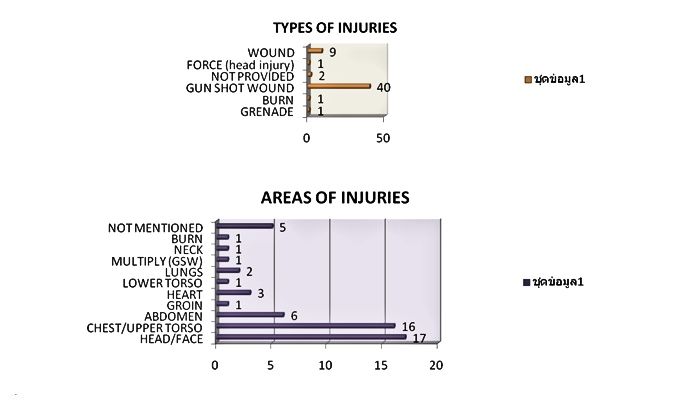
Abb.: "Bilanz"
[Bildquelle: Prachatai. --
http://www.flickr.com/photos/prachatai/4739233921/in/photostream. -- Zugriff
am 2013-02-11. --
Creative Commons Lizenz (Namensnennung, keine kommerzielle Nutzung, keine
Bearbeitung]
2010-05-27
Tod des Cartoonisten und Zeichentrickfilmherstellers Payut Ngaokrachang (ปยุต เงากระจ่าง, 1929 - )
Abb.: Payut Ngaokrachang (ปยุต เงากระจ่าง), 2007
[Bildquelle: Curtis Winston / Wikipedia. -- GNU FDLicense]
"Payut Ngaokrachang (Thai: ปยุต เงากระจ่าง, April 1, 1929 – May 27, 2010) was a Thai cartoonist and animator. He created Thai cinema's first cel-animated feature film, The Adventure of Sudsakorn (สุดสาคร). Biography
Early life
Payut was born at Klong Warl village (คลองวาฬ), Warkoe (หว้ากอ), Prachuap Khiri Khan Province (ประจวบคีรีขันธ์ ). As a child, Payut was interested in nang drama (หนัง, shadow-puppet plays) and Felix the Cat.
In 1944, he enrolled in classes to become an art teacher. Payut studied by correspondence with illustrator Hem Vejakorn (เหม เวชกร, 1904 - 1969), whose work was seen on the covers of 10-satang pulp novels. Through their letters back and forth, Hem introduced Payut to drawing.
"I had been a fan of Khru Hem’s drawings since 1944, when I was 14. So, I wrote him asking to become his student. He was a great teacher and taught me a lot, from how to draw anatomy to getting the right perspective on paintings. I learned all this from his letters," Payut told The Nation newspaper in a 2004 interview.[2]
At age 17, Payut took his first job painting backgrounds for play sets as he traveled around Thailand with theater groups. Payut also worked as a block printer, making etchings, and was employed at an advertising agency.
Inspiration as animatorOne of Payut's influences was artist Sanae Klaikluen (เสน่ห์ คล้ายเคลื่อน), whom Payut had met in 1941. Sanae was interested in animation and wanted Payut to join him in a project. Sanae was commissioned in 1945 to make a one-minute animated film for the Thai government, which was campaigning to get citizens to wear hats and farmers to wear boots. Sanae died a year later, and it was then that Payut decided he wanted to be an animator.
In 1955, while he was recovering from an illness, Payut set about animating a cartoon he had been drawing for a newspaper. In the cartoon, Haed Mahasajan (เหตุมหัศจรรย์), a policeman directs traffic, swaying to the tune of music in the manner of Thai classical dancers. A woman starts crossing the street when the zipper on her dress splits, diverting the policeman's attention with the result that cars pile up all around him.
The 12-minute short premiered on July 5, 1955 at Sala Chalermthai Theater (ศาลาเฉลิมไทย).
Work for USISThe acclaim that accompanied Payut's "Hollywood-like" animated short caught the attention of the US embassy in Bangkok, which led to his hiring by the United States Information Service (USIS), where he worked for nearly 33 years as an artist.
For training, the USIS gave Payut a choice of spending six to eight months with Disney or going to Japan. He chose Japan, where he has said he "just looked around, as animation did not exist there at the time."
Payut only made one animated film for the USIS, a 20-minute recounting of the story of Hanuman, the white monkey in the classic Ramayana. Made in 1957, it was called Hanuman Pachon Pai Krang Mai (หนุมานเผชิญภัย (ครั้งใหม่) -The Adventure of Hanuman). It was a propaganda work, with a red monkey representing communism.
In 1960, he created a short cartoon called Dek Kab Mee (เด็กกับหมี, A Boy and A Bear) for the Southeast Asia Treaty Organization, which called for unity in order to combat communism.
He also worked part-time jobs making animated commercials.
The Adventure of Sudsakorn (สุดสาคร)While keeping his day job at USIS, Payut began work in 1976 on The Adventure of Sudsakorn, featuring a character from one of Thailand's most famous literary works, Pra Apai Manee (พระอภัยมณี) by the poet Sunthorn Phu (สุนทรภู่, 1786 - 1855). Sudsakorn, the boy hero, is the son of a mermaid and a wandering musician-prince, and his adventures include fights with an elephant, a shark, a dragon horse, as well as encounters with a king, a hermit, a yogi, a magic wand and ghosts.
The 82-minute feature was released on Songkran Day, April 13, 1979.
The production was plagued with shortages of capital, personnel and equipment. For the first six months, the crew had 100 workers, but by the second year their numbers were reduced to nine.
"I made a lot of my equipment from pieces I got from junk of World War II military surplus," Payut told writer John A. Lent. "I'd find a screw here, a crank there, etc. I used a combat camera and adapted it. I pulled together pieces of wood, aluminum, whatever I could find."
The intense, detailed work on Sudsakorn impaired his eyesight. "I did all the key drawings myself, even the layout and design ... I was almost blind from doing that film and now I wear contacts. My right eye is long, my left is short, crooked because of all that detailed work."
Later workAttempts to make more animated features were rebuffed because of the expense involved. It was cheaper for Thai movie studios to make live-action films.
His next animated film wasn't made until 1992, when he was subsidized by Film of Japan to make a film for educating girls under the title My Way.
He's also been a guest lecturer on animation at many universities.
Payut's The Adventure of Sudsakorn is occasionally screened at film and animation festivals around the world.
LegacyThe Thai Short Film & Video Festival (เทศกาลภาพยนตร์สั้น) has the Payut Ngaokrachang prize for animation. The award is a medallion designed by Payut.
While feature-length animated features are rare in the Thai film industry since The Adventure of Sudsakorn, animation is widely used in Thai television series and in commercials. A 3D animated Sudsakorn series is one such show."
[Quelle: http://en.wikipedia.org/wiki/Payut_Ngaokrachang. -- Zugriff am 2012-06-09]
2010-05-29
Beginn des Testbetriebs des Bus Rapid Transit (Bangkok BRT, รถโดยสารประจำทางด่วนพิเศษในเขตกรุงเทพมหานครและปริมณฑล) zwischen Sathorn (สาทร) und Ratchapruek (ราชพฤกษ์).
Abb.: Linienführung des Bangkok BRT (gelb), 2010
[Bildquelle: http://www.bangkokbrt.com/file/BRT_%E0%B8%BAbooklet.pdf. -- Zugriff am 2012-10-30. -- Fair use]
Abb.: Bangkok BRT, Sathorn Station (สาทร), 2010
[Bildquelle: Sry85 / th.Wikipedia. -- GNU FDLicense]
2010-05-31

Laut NZZ fordert Gothom Arya (โคทม อารียา, 1954 (?) - ) eine "offene Diskussion" über die Monarchie. Gotham ist Direktor des Research Center for Peace Building (ศูนย์ศึกษาและพัฒนาสันติวิธี) der Mahidol University (มหาวิทยาลัยมหิดล)
2010-06
Momentaufnahme des Schwulenviertels Sunee Plaza in Pattaya (พัทยา).
Abb.: Lage von Pattaya (พัทยา)
[Bildquelle: OpenStreetMap. -- Creative Commons Lizenz (Namensnennung, share alike)]
Abb.: Plan von Sunee Plaza, Pattaya (พัทยา), 2010-06
[Bildquelle: GoScoutUK / Wikipedia. -- GNU FDLicense]
2010-06-04

Nach dem Rücktritt des japanischen Ministerpräsidenten Yukio Hatoyama (鳩山 由紀夫) wird Naoto Kan (菅 直人, 1946 - ) zum Ministerpräsidenten Japans gewählt.
Abb.: Japan
[Bildquelle: CIA. -- Public domain]
.
Abb.: Naoto Kan (菅 直人)
[Bildquelle: DonkeyHotey. -- http://www.flickr.com/photos/donkeyhotey/5733990072/in/photostream. -- Zugriff am 2012-01-05. -- Creative Commons Lizenz (Namensnennung, share alike)]
2010-06-06

อาศิส พิทักษ์คุมพล (อับดุลอาซีซ บิน อิสมาอิล อัล-ฮัจญ์, geb. 1947) wird Chularajamontri (จุฬาราชมนตรี)
Abb.: อาศิส พิทักษ์คุมพล (อับดุลอาซีซ บิน อิสมาอิล อัล-ฮัจญ์), 2011
[Bildquelle: th.Wikipedia]
2010-06-06
Die Regierung verlängert den Ausnahmezustand in Bangkok und 18 Provinzen bis Dezember 2010.
2010-06-07

Ministry of Foreign Affairs Thailand: Frequently Asked Questions about the Current Political Situation in Thailand
"10. Is the uncertainty associated with the issue of succession a destabilising factor for the Thai situation? Why is this not discussed openly in the public? The issue of royal succession is clear, both with regard to the Heir to the Throne and rules and procedures as to what will happen should the need arise. Relevant provisions in the current Constitution also lay out the specific roles of the Privy Council, National Assembly and Cabinet.
Nevertheless, the succession is certainly a difficult issue for Thais to discuss, given what His Majesty has done for more than 60 years for the well-being of all Thai people who regard him as a father figure. It is thus normal for people to be apprehensive."
[Quelle: http://www.zenjournalist.com/wp-content/uploads/2012/08/MFA-_-FAQ-on-Thailand.pdf. -- Zugriff am 2014-10-24]
2010-06-11

Es erscheint
Stent, James: Thoughts on Thailand’s Turmoil. -- http://poppyfieldjournal.blogspot.de/p/thoughts-on-thailands-turmoil-by-james.html. -- Zugriff am 2014-10-22
Einige Zitate:
"Bangkok friends retorted that Thaksin was elected only because of the power of his wealth, and that the voters were bribed. From my own experience in the village of Baan Ton Thi in Chiang Rai [เชียงราย], I knew that Thaksin’s Thai Rak Thai party [พรรคไทยรักไทย] was indeed alleged to have paid THB 500 to each villager to secure their votes, but in conversations with the villagers, it was apparent that these villagers genuinely liked what Thaksin was doing for them, and felt that he was the first Thai politician who talked to them about their own welfare, and who delivered on his promises. It is a measure of the power of Thaksin’s PR machine that among the villagers, all good things that were happening in the kingdom were attributed to Thaksin. When I asked the villagers if it were not true that Thaksin was very corrupt, the amused response invariably was “Of course, he is corrupt—all politicians are corrupt, but this is the first corrupt politician who has done something for us.” To this day, the corruption, abuses, and personal wealth of Thaksin are glossed over by his rural supporters—not denied, just treated as irrelevant. " "But times have changed. As Bill Klausner [William J. Klausner] has written extensively, the confined worlds of rural Thai villages that he knew in the 1950s, where spirits and officials were to be appeased and a traditional subsistence way of life was passed on from generation to generation with little change, has radically changed. Now villagers are plugged into the rest of the world via television, mobile phones, pick-up trucks, and family members spending time working at wage earning jobs in Bangkok. As many taxi drivers, all hailing from countryside villages in the Northeast of Thailand, have told me, “We really aren’t as stupid as the city people think we are. We used to be stupid, but no longer.”
They have concluded that the institutions of government were all being mobilized against them, to protect the interests of the establishment (now called the amat [อำมาตย] in Thai):
- the army which launched the coup against Thaksin, and which sat by idly in 2008 while the yellow shirts occupied the international airport and took over government house, but later sent the troops in to suppress the red shirt demonstrations in 2010;
- the new constitution, more or less foisted on the country under the period of military control in 2007 and designed to change the political game to favor the amat [อำมาตย];
- the court decisions in the political sphere that always seem to favor the amat and take little account of the interests of the common man;
- and the back-room dealing conducted by the military that in December of 2008 brought the Democrats into power in unlikely coalition with one of Thailand’s more unsavory politicians, Newin [เนวิน ชิดชอบ, 1958 - ];
- and, as the vicious attacks on Privy Councilor Prem [เปรม ติณสูลานนท์, 1920 - ] indicate, even elements of the palace have come under suspicion of partiality. "
[a.a.O.]
2010-06-12
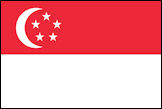
Singapur: Creatively Thai 2010:
Abb.: Creatively Thai 2010
[Bildquelle: AndyLeo@Photography. -- http://www.flickr.com/photos/22182159@N03/4699449453. -- Zugriff am 2013-10-17. -- Creative Commons Lizenz (Namensnennung, keine kommerzielle Nutzung, keine Bearbeitung)]
Abb.: Creatively Thai 2010
[Bildquelle: AndyLeo@Photography. -- http://www.flickr.com/photos/22182159@N03/4706258666 . -- Zugriff am 2013-10-17. -- Creative Commons Lizenz (Namensnennung, keine kommerzielle Nutzung, keine Bearbeitung)]
2010-06-17 - 2010-06-25


Gemeinsame Flottenübung der USA und der ASEAN-Länder Brunei, Indonesien, Malaysia, Philippinen, Singapur und Thailand auf dem Territorien und in den Gewässern Singapurs. Offizielles Übungsziel: Terrorbekämpfung (Southeast Asia Cooperation Against Terrorism (SEACAT) 2010. "SEACAT is a weeklong, at-sea exercise designed to highlight the value of information sharing and multinational coordination.")
Abb.. Teilnehmer (außer USA) an SEACAT
[Bildquelle: CIA. -- Public domain]
Abb.: "ANDAMAN SEA (June 23, 2010) Royal Malaysian Navy sailors stand security watch during a boarding exercise aboard the U.S. Coast Guard cutter (USCGC) Mellon (WHEC 717) as part of Southeast Asia Cooperation Against Terrorism (SEACAT) 2010. SEACAT is a weeklong at-sea exercise designed to highlight the value of information sharing and multinational coordination. "
[Bildquelle: U.S. Navy photo by Mass Communication Specialist 2nd Class David A. Brandenburg/Released. -- http://www.navy.mil/. -- Zugriff am 2012-01-18. -- Public domain]
Abb.: "CHANGI, Singapore (June 23, 2010) Operations Specialist 1st Class Jacoby Dixon watches officers from Thailand, Brunei and Indonesia communicate remotely with their forces during ship boarding exercises for Southeast Asia Cooperation Against Terrorism (SEACAT) 2010."
[Bildquelle: U.S. Navy photo by Mass Communications Specialist 2nd Class Jason Tross/Released. -- http://www.navy.mil/. -- Zugriff am 2012-01-18. -- Public domain]
2010-06-18
Laut Justizministerium wurden vor allem wegen Majestätsbeleidigung 43.000 Webseiten geschlossen.
2010-06-19 - 2013-12-31
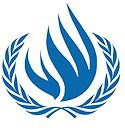
Thailand ist Mitglied des United Nations Human Rigths Council
2010-06-21

Der Thailänder Sihasak Phuangketkeow (1957 - ) wird für ein Jahr zum Präsidenten des UN Human Rights Council gewählt.
Abb.: Sihasak Phuangketkeow, 2010-06-20
[Bildquelle: UN Photo/Pierre Virot. -- http://www.flickr.com/photos/unisgeneva/4887434445/. -- Zugriff am 2012-01-18. -- Creative Commons Lizenz (Namensnennung, keine kommerzielle Nutzung, keine Bearbeitung)]
2010-06-24

Julia Gillard (1961 - ) wird Ministerpräsidentin von Australien.
Abb.: Australien
[Bildquelle: CIA. -- Public domain]
Abb.: Julia Gillard
[Bildquelle: DonkeyHotey. -- http://www.flickr.com/photos/donkeyhotey/5751870834/in/photostream. -- Zugriff am 2012-01-05. -- Creative Commons Lizenz (Namensnennung, share alike)]
Abb.: Julia Gillard / von Murray Webb (1947 - ), 2010
[Bildquelle: Julia Gillard. [4 July 2010]. Webb, Murray, 1947- :[Digital caricatures published from 29 July 2005 onwards (2006, 2007, 2008). Includes a selection of digital caricatures published from 2002 and up to July 2005.]. Ref: DCDL-0014755. Alexander Turnbull Library, Wellington, New Zealand. http://natlib.govt.nz/records/23166900. -- Zugriff am 2013-03-07. -- "You can copy this item for personal use, share it, and post it on a blog or website. It cannot be used commercially without permission"]
2010-06-24 - 2010-06-26
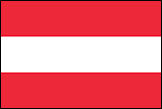
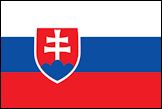
Thai-Außenminister Kasit Piromya (กษิต ภิรมย์, 1944 - ) ist auf offiziellem Besuch in Österreich und der Slowakei.
Abb.: Lage von Österreich und der Slowakei
[Bildquelle: CIA. -- Public domain]
ausführlich: http://www.payer.de/thailandchronik/ressourcen.htm
Zu Chronik 2010 / B. E. 2553. -- 3. Juli bis Dezember